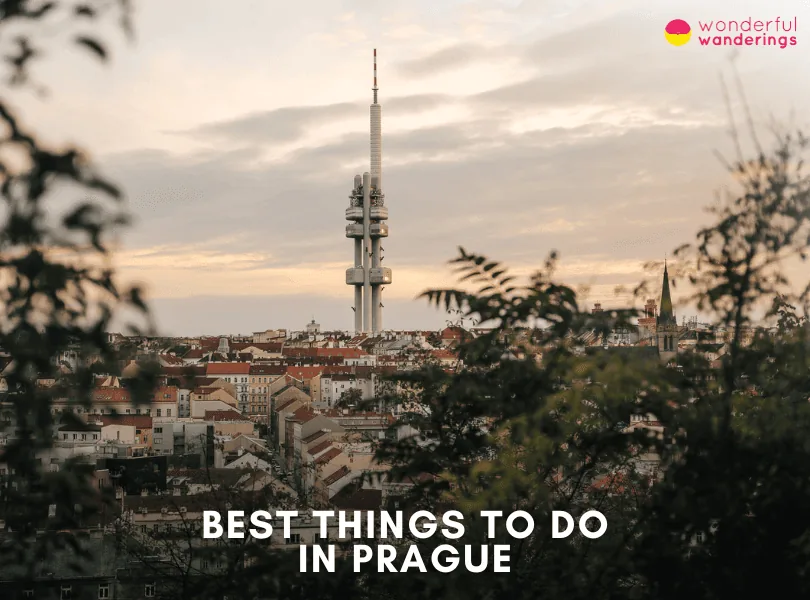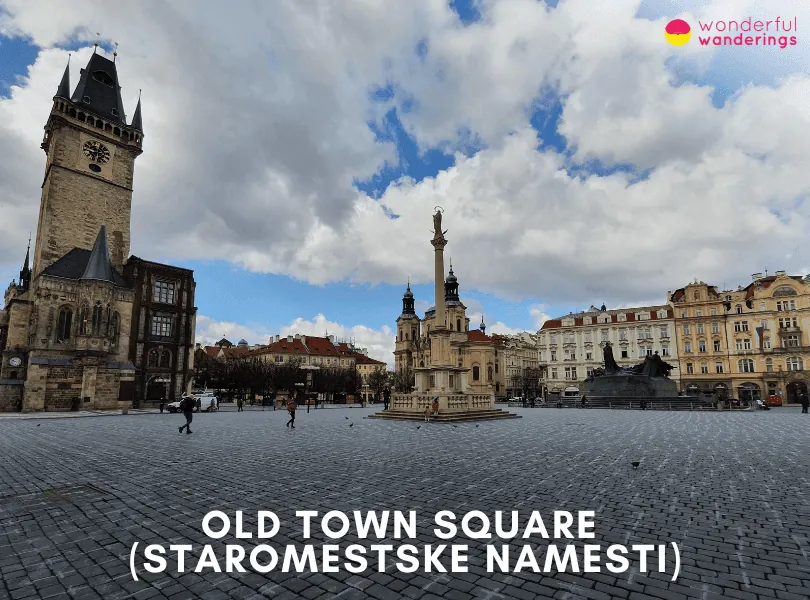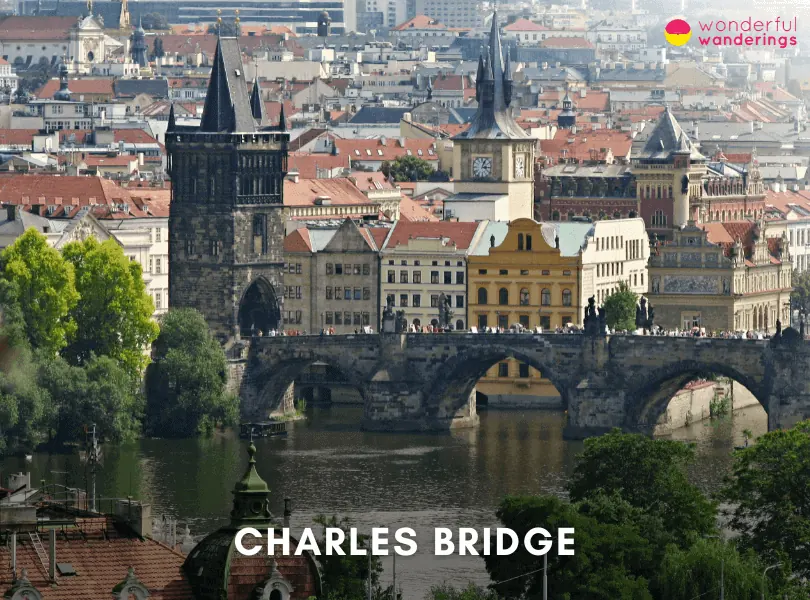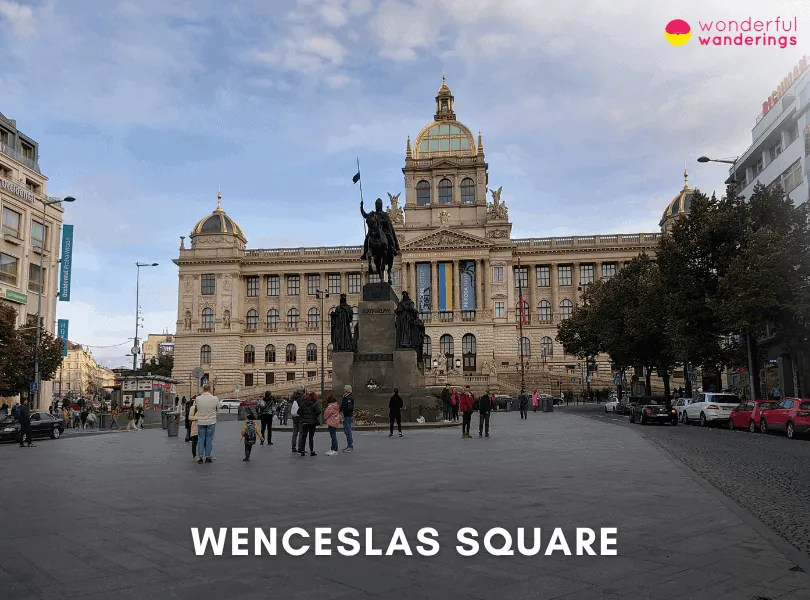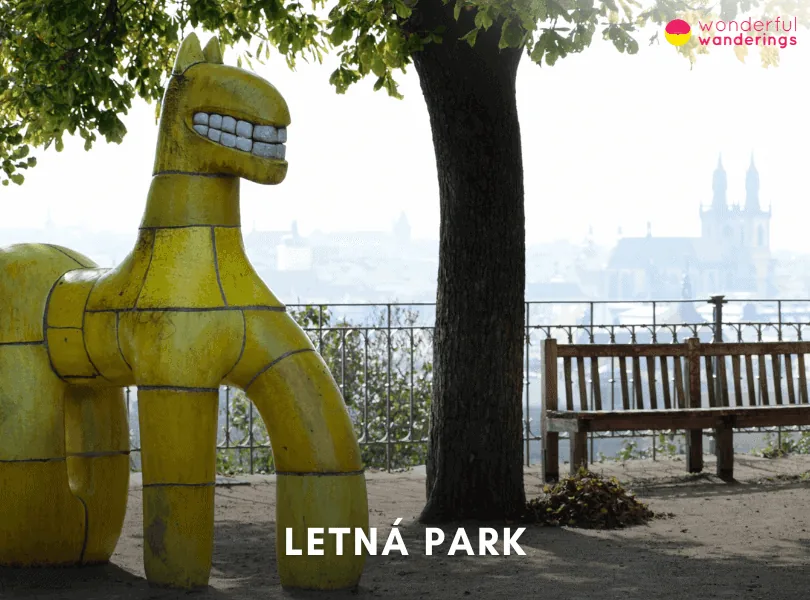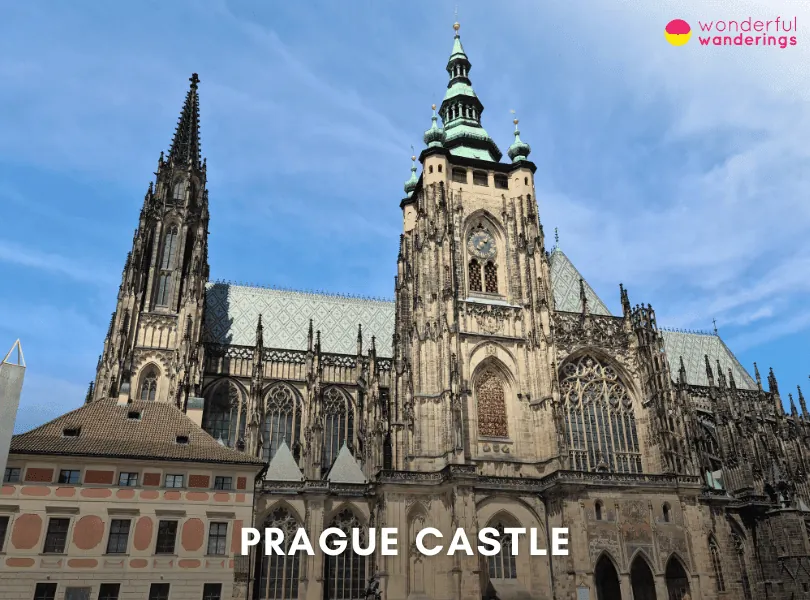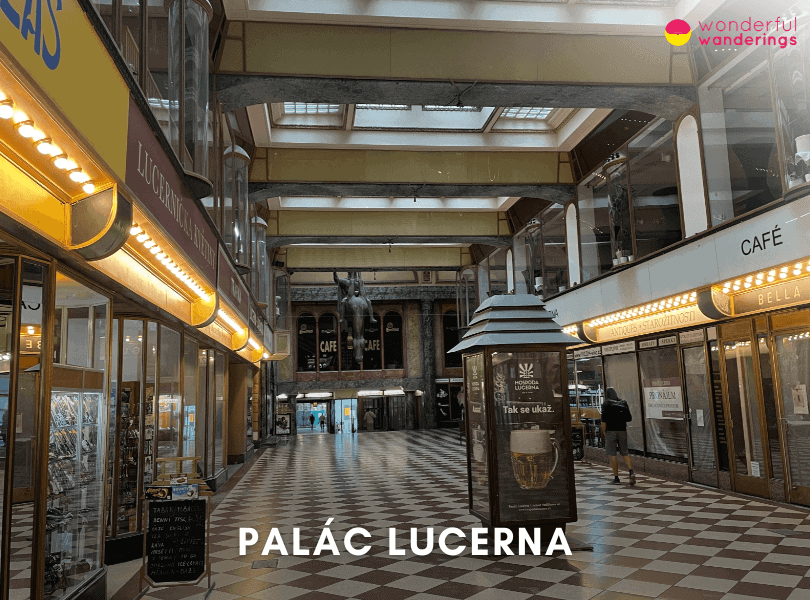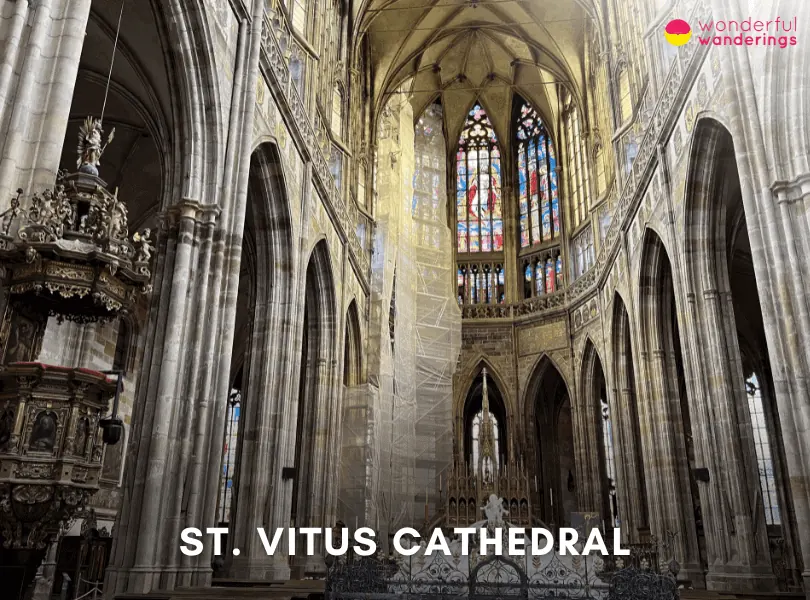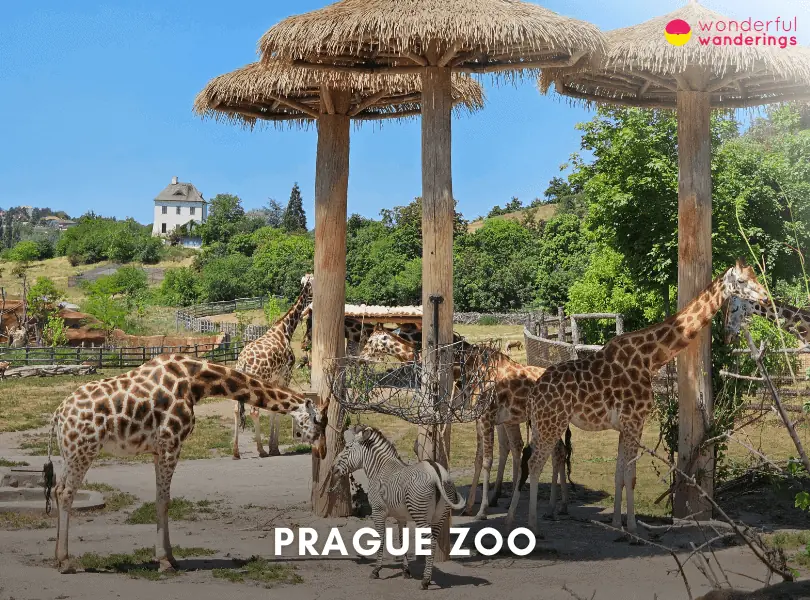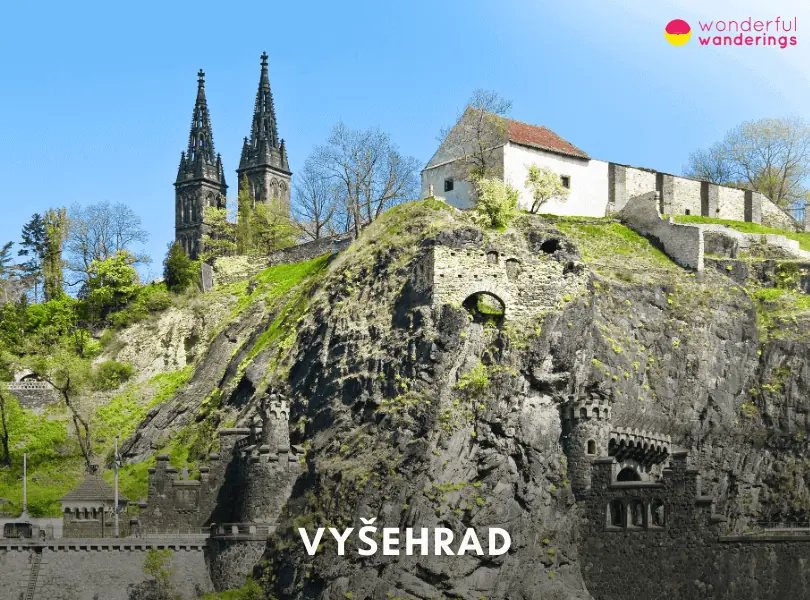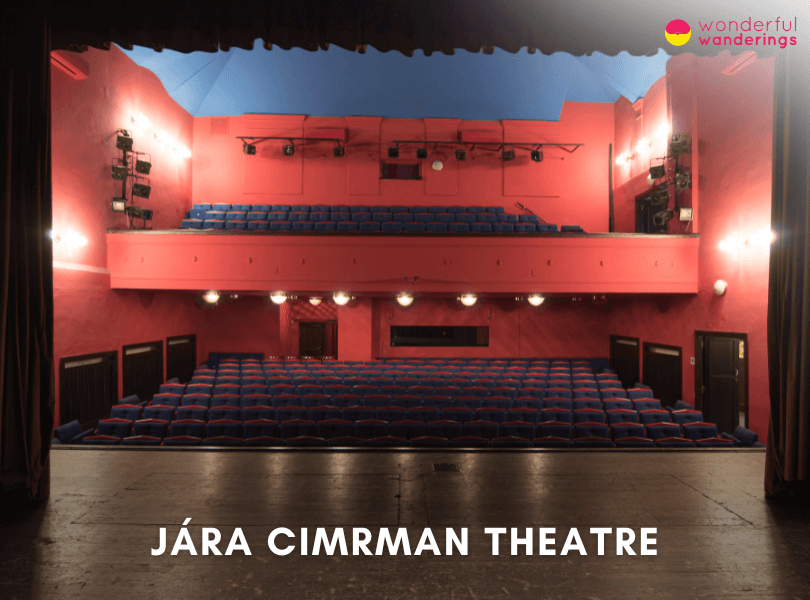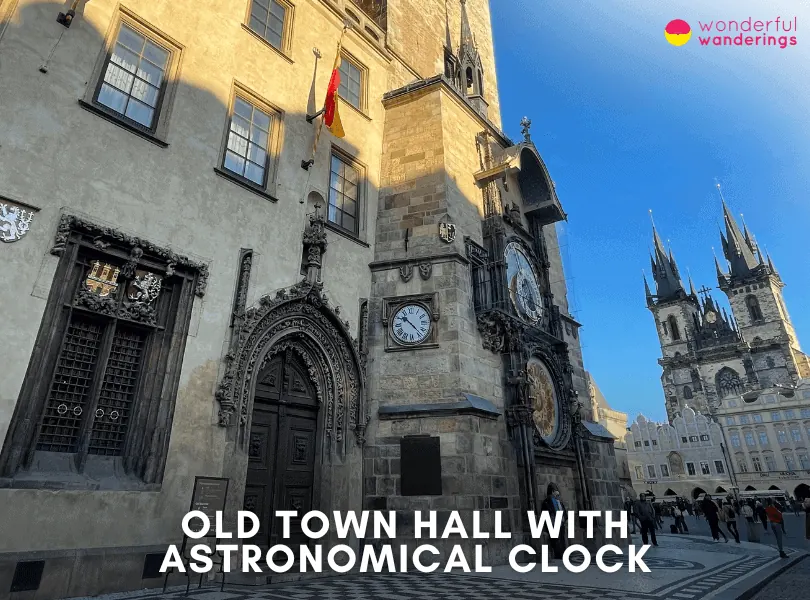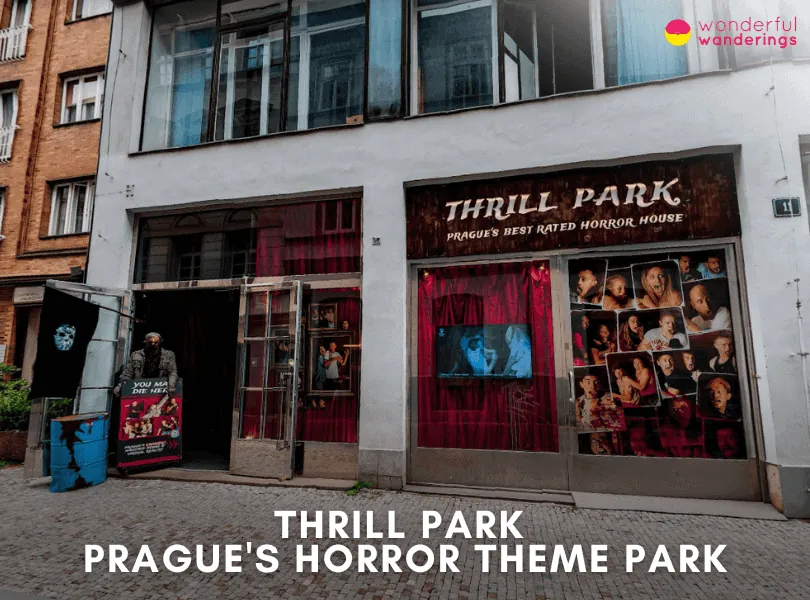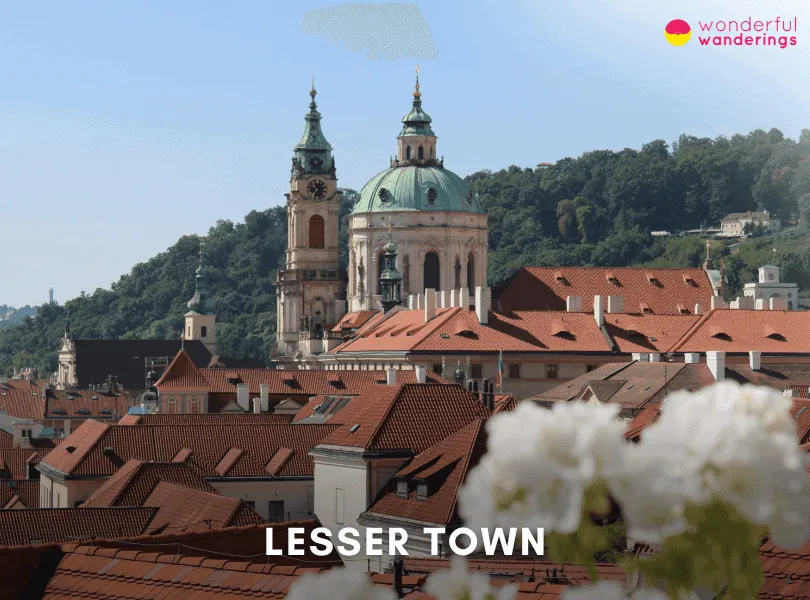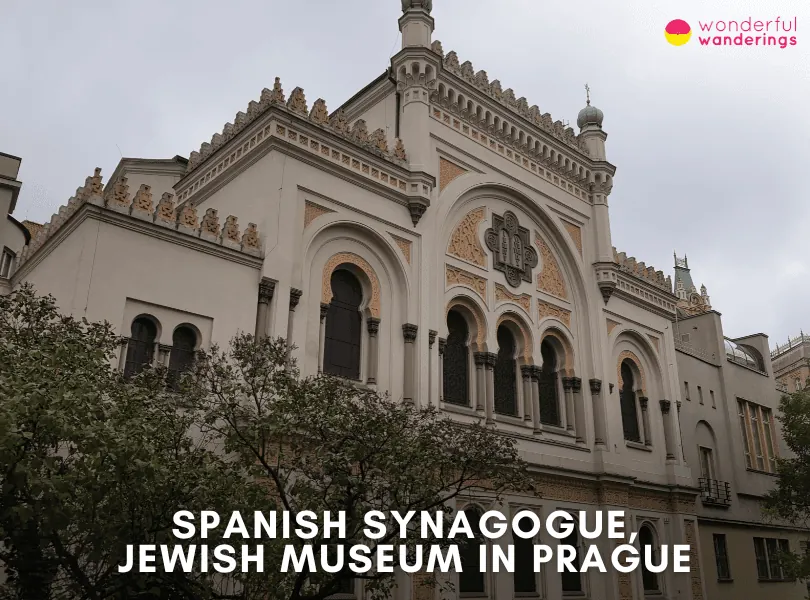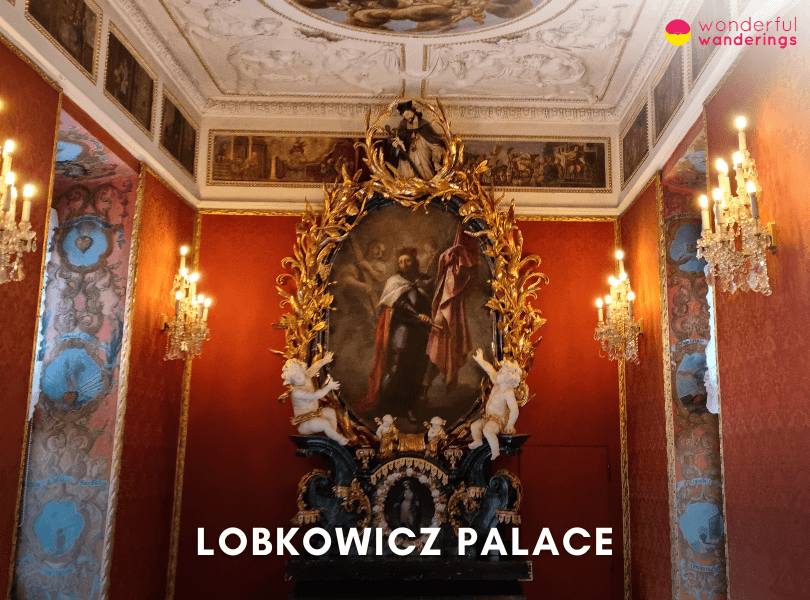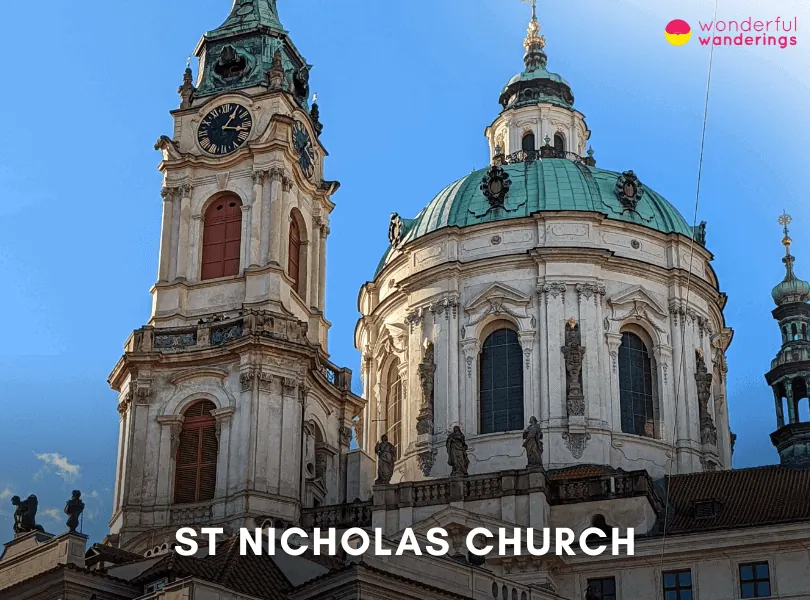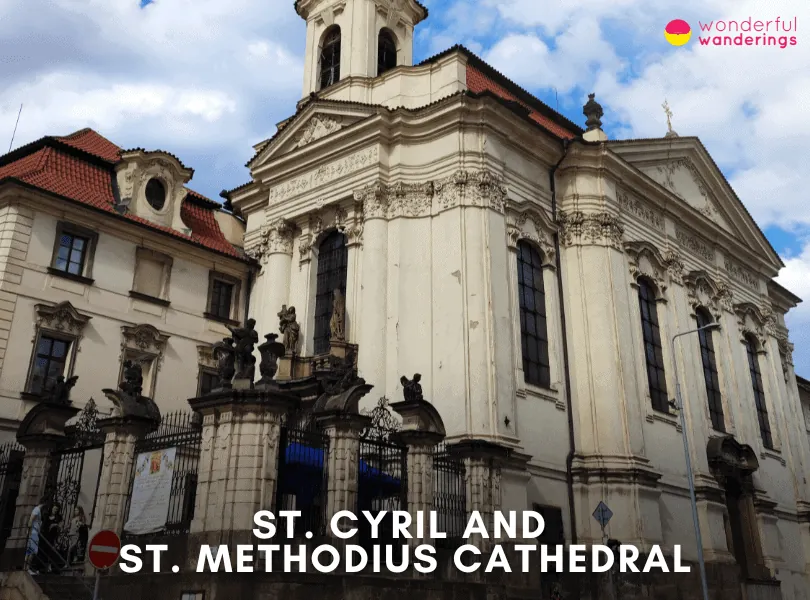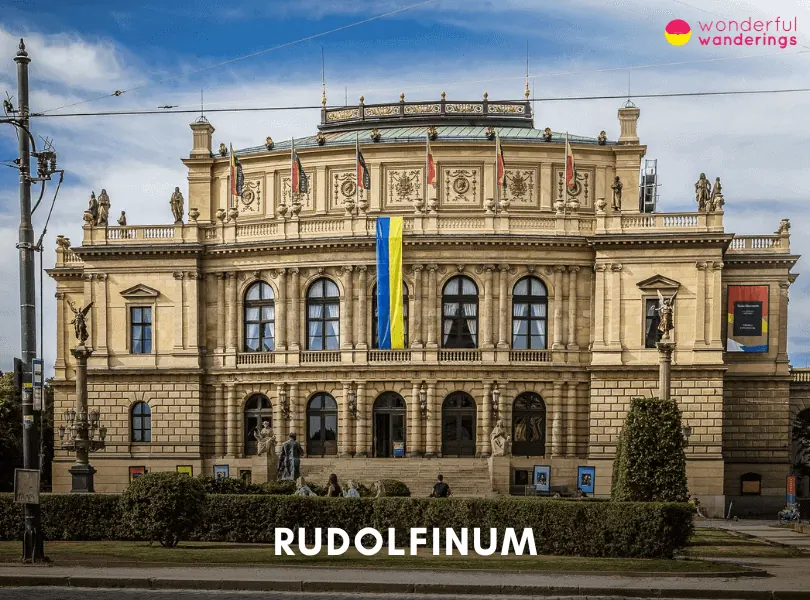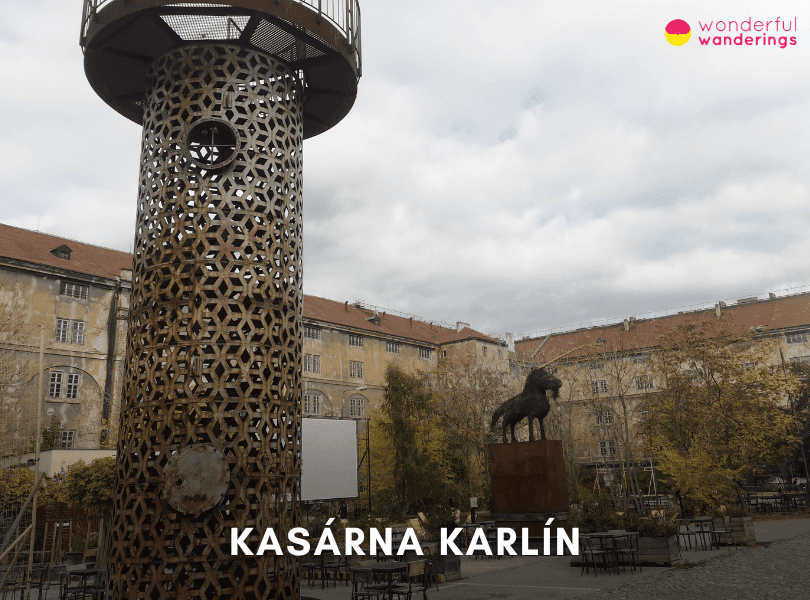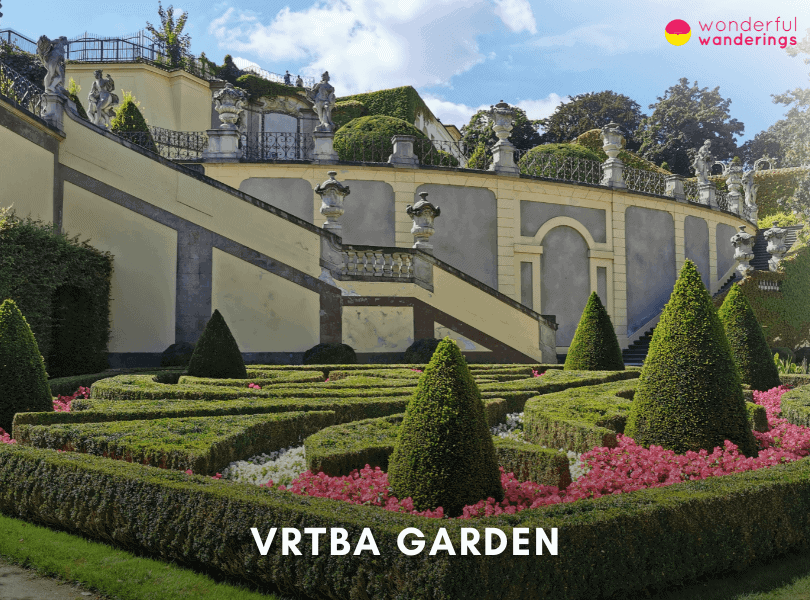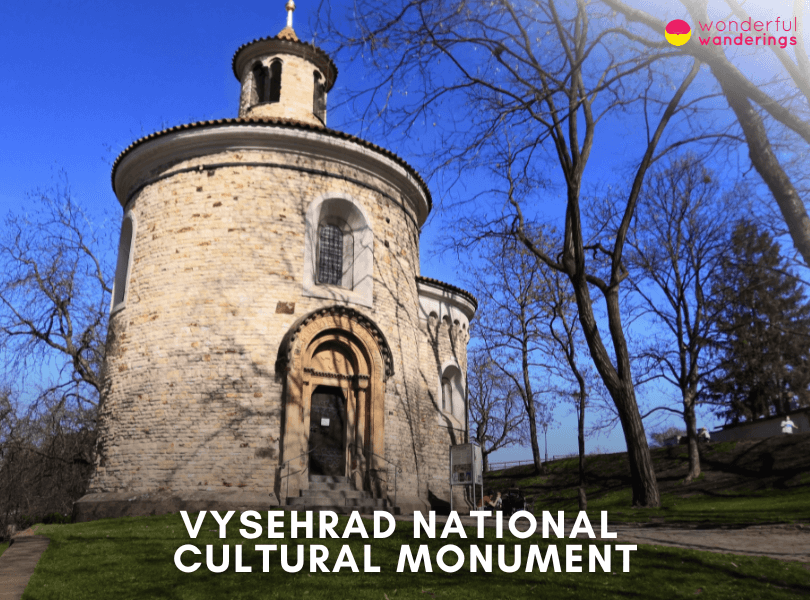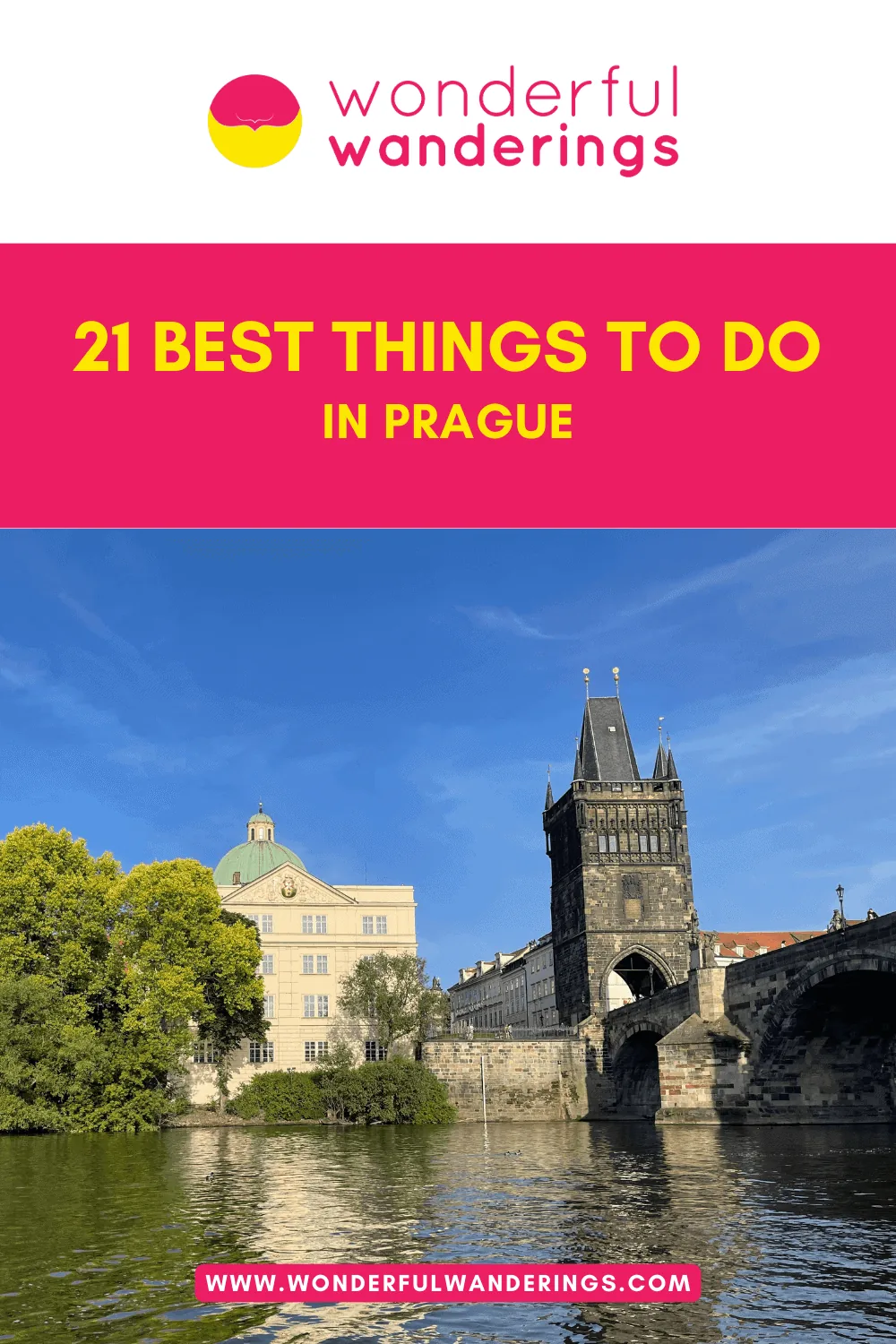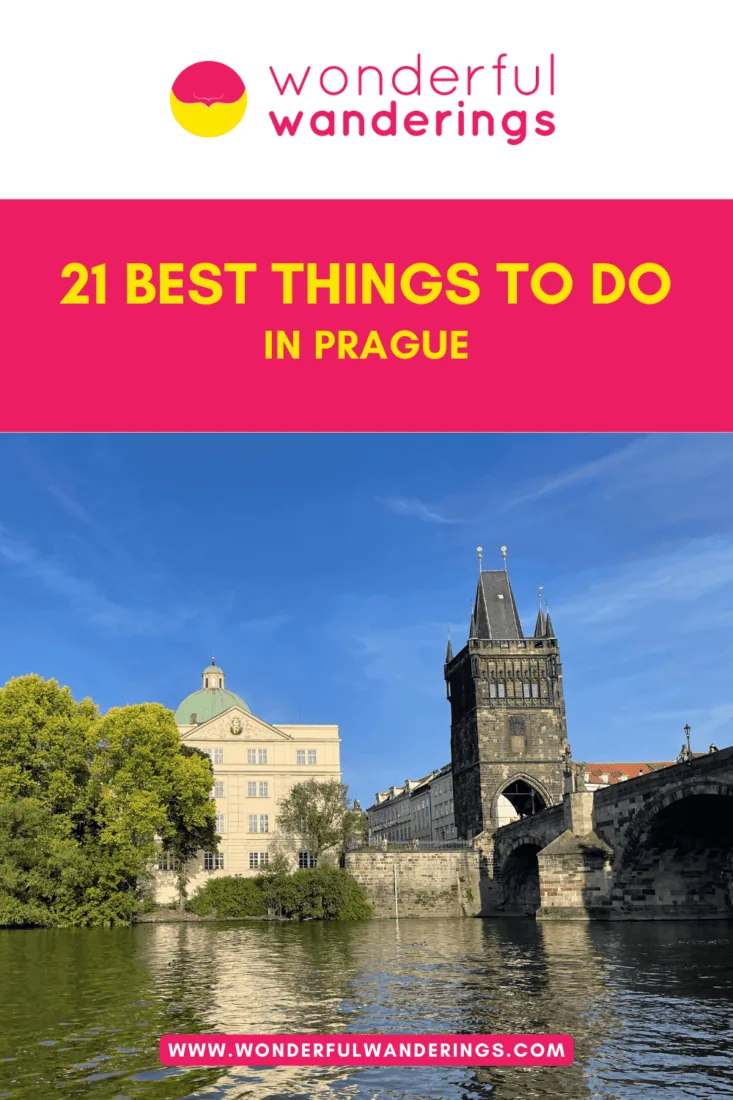Prague is the capital and largest city of the Czech Republic, located in Central Europe. Prague comes from an old Slavic word meaning “threshold” or “ford”. The city is pronounced as “prah-guh” in English. Prague has several alternative names in other languages, such as Praga in Latin, Italian and Spanish or Praha in Czech and most Slavic languages. Prague has a long and rich history, dating back to the 9th century when it was founded as a castle and a trading center. The city became the seat of the kings of Bohemia and the Holy Roman Emperors and played a key role in the Protestant Reformation, the Thirty Years’ War and the nationalist movements of the 19th and 20th centuries. Prague was also occupied by Nazi Germany and later by the Soviet Union until it regained its independence in 1989 after the Velvet Revolution.
Prague is famous for its beautiful and diverse architecture, ranging from Romanesque, Gothic, Renaissance and Baroque to Art Nouveau, Cubist and Modernist styles. Some of the most popular attractions in Prague include Prague Castle, the largest ancient castle in the world, the Charles Bridge, a medieval stone bridge with 30 statues, the Old Town Square, the heart of the historic center with the astronomical clock and the Tyn Church and the Jewish Quarter, with its old synagogues and cemetery. Prague offers many activities for visitors of all ages and interests. The city is a cultural hub with numerous museums, galleries, theaters and festivals. Prague is also a great destination for food and drink lovers, as it features a variety of cuisines, from traditional Czech dishes such as roast pork, dumplings and goulash to international specialties such as sushi, pizza and burgers. Prague is also famous for its beer brewed in local pubs and microbreweries.
Listed below are the best things to do in Prague.
- Old Town Square. Old Town Square is a historic square in the Old Town quarter of Prague. It features buildings of various architectural styles, such as the Gothic Church of Our Lady before Týn and the Baroque St. Nicholas Church. The square also has the Prague Astronomical Clock and the Jan Hus Memorial.
- Charles Bridge. Charles Bridge is a medieval stone arch bridge crossing Prague’s Vltava River. It was built in the 14th century by King Charles IV and has 16 arches and 30 statues of saints. The bridge offers scenic views of the city and is a popular tourist attraction.
- Wenceslas Square. Wenceslas Square is a long boulevard in Prague’s New Town. It is named after Saint Wenceslas, the patron saint of Bohemia and has a statue of him at the top. The square has been the site of many historical events, such as the Declaration of Czechoslovak Independence and the Velvet Revolution.
- Letná Park. Letná Park is a large park on a hill above the Vltava River. It has grassy areas, trees and a long avenue lined with plane trees. The park has a beer garden, a giant metronome and the oldest carousel in Europe. It also provides panoramic views of the Old Town.
- Prague Castle. Prague Castle is a castle complex in Prague, built in the 9th century. It is the official office of the President of the Czech Republic and the former seat of kings and emperors. The castle has palaces, churches and gardens of different styles and houses the Bohemian Crown Jewels.
- Palác Lucerna. Palác Lucerna is an entertainment and shopping complex in the New Town quarter of Prague. It was built in the early 20th century by Vácslav Havel, the grandfather of the former president. It features a cinema, a music bar, a gallery and a famous sculpture of a hanging horse.
- St. Vitus Cathedral. St. Vitus Cathedral is Prague’s largest and most important church, located within Prague Castle. It was founded in the 10th century and completed in the 20th century. It is the seat of the Archbishop of Prague and the burial place of many Czech kings and saints.
- Prague Zoo. Prague Zoo is one of the best zoos in the world, on the bank of the Vltava River. It was opened in 1931 and covers 58 hectares (143.32 acres). It houses 5,000 animals from 676 species, including the endangered Przewalski’s horse. It also offers various attractions and services for visitors.
- Vyšehrad. Vyšehrad is a medieval fortress and the oldest seat of Czech princes, built on a rocky promontory above the Vltava River. It has a rich history, legends and many monuments, such as the Basilica of St. Peter and St. Paul, the Vyšehrad Cemetery and the Rotunda of St. Martin.
- Jára Cimrman Theatre. Jára Cimrman Theatre is a comedy theatre dedicated to the fictional character of Jára Cimrman, a genius Czech inventor, musician, detective and athlete. The theatre was founded by Zdeněk Svěrák and Ladislav Smoljak, who wrote and performed the plays. The theatre also has an English-speaking branch for non-Czech audiences.
1. Old Town Square (Staromestske namesti)
Old Town Square is a historic square in the Old Town quarter of Prague, the capital of the Czech Republic. It is also known as Staroměstské náměstí or Staromák in Czech. The square is between Wenceslas Square and Charles Bridge, two other popular attractions in the city. Old Town Square features buildings of various architectural styles, such as the Gothic Church of Our Lady before Týn, the Baroque St. Nicholas Church and the Kinský Palace, which houses an art museum. The square is also home to the Old Town Hall, where visitors can climb the tower for panoramic views of the Old Town. The Old Town Hall has a medieval astronomical clock, which shows different times and dates and a procession of figures every hour.
Old Town Square is a place of historical significance, as it witnessed many events that shaped the history of Prague and the Czech Republic. The square was the site of executions, protests, celebrations and revolutions. The most prominent monument in the square is the statue of Jan Hus, a religious reformer who was burned at the stake for his beliefs. The statue commemorates the 500th anniversary of his death and the following Hussite Wars. Old Town Square is a popular destination for tourists and locals alike, as it offers a variety of activities and events throughout the year. The square hosts markets, concerts, festivals, exhibitions and famous Christmas and Easter markets. The square is surrounded by cafes, restaurants, shops and galleries, where visitors can enjoy the local cuisine, culture and atmosphere. Old Town Square is best for people interested in history, architecture, art and culture. The square is suitable for all ages and budgets.
2. Charles Bridge
The Charles Bridge is a stone arch bridge that crosses the Vltava River in Prague, Czech Republic. It was built between 1357 and 1402 by King Charles IV, who replaced the old Judith Bridge that had collapsed in a flood. The bridge has 16 arches and is 516 meters (1,693 feet) long and 10 meters (33 feet) wide. The Charles Bridge is also known as Karlův most in Czech or the Stone Bridge or Prague Bridge in the past. It connects the Old Town and the Lesser Town, two historic districts of Prague. The bridge is decorated with 30 statues of saints, most of them in the Baroque style. The bridge also has three towers, one on the Old Town side and two on the Lesser Town side, offering panoramic city views.
The Charles Bridge is a popular tourist attraction and a cultural landmark of Prague. Visitors can enjoy walking along the bridge, admiring the statues and the river views and listening to street musicians and artists. The bridge is also a venue for various events and festivals, such as the Bridge Festival in June and the St. John’s Navalis in May. The Charles Bridge is best for people interested in history, art and architecture. The bridge showcases Prague’s medieval and Baroque styles and reflects the city’s religious and political history. The bridge symbolizes the city’s resilience and beauty, as it survived many wars, floods and fires over the centuries. The Charles Bridge is free to visit and is open 24 hours a day; however, it can get very crowded during peak hours and seasons, so it is advisable to see early in the morning or late in the evening to avoid crowds. The bridge towers charge a small admission fee, depending on the season and the time of the day. The average price is 3.8€ ($4.14, £3.31) for adults and 1.9€ ($2.07, £1.65) for children and students.
3. Wenceslas Square
Wenceslas Square is a long and wide boulevard in Prague’s New Town. It is also known as Václavské náměstí or Václavák in Czech. It was founded by King Charles IV in 1348 as one of the main marketplaces of the city. It was originally called Horse Market because of the horse trade in the area. The square is named after Saint Wenceslas, the patron saint of Bohemia. At the southeast end of the square, there is a statue of Saint Wenceslas on a horse, surrounded by other Czech saints. The statue was created by Josef Václav Myslbek in 1913 and became a symbol of Czech nationhood. In front of the statue is the National Museum, a neoclassical building that houses collections of natural history, art and culture.
Wenceslas Square has been the scene of many important historical events, such as the proclamation of Czechoslovak independence in 1918, the Nazi occupation during World War II, the Prague Uprising in 1945, the Soviet invasion in 1968, the Velvet Revolution in 1989 and the protests against the government in 2019. The square is often used for demonstrations, celebrations and other public gatherings. The square is also a popular destination for tourists and locals alike, as it offers a variety of attractions, such as shops, restaurants, cafes, bars, clubs, hotels, cinemas, theatres and museums. The square is especially lively when the neon lights and music create a festive atmosphere at night. The square is suitable for anyone who wants to experience Prague’s culture, history and entertainment.
4. Letná Park
Letná Park is a large natural area on Letná Hill, built on a plateau above steep embankments along the Vltava River in Prague, Czech Republic. It is also known as Letenské sady in Czech. The park offers commanding views of the Prague Old Town, which is on the river’s opposite bank. The park is located on the northern side of the city, near the Lesser Town and the Prague Castle. It is easily accessible by public transport, bike or foot. The park has several entrances, parking lots and sidewalks and trails leading to different parts of the park.
Letná Park is a popular spot for hiking, skateboarding, picnics and other outdoor activities. It also hosts many festivals, concerts and live performances in summer. The most popular attraction in the park is the beer garden in the southeast corner, where visitors can enjoy beer and Czech food. Letná Park also has some historical and cultural significance. It was the site of some important demonstrations against the Communist government during the Velvet Revolution in 1989. It also has a giant metronome that replaced the world’s largest statue of Stalin, which was demolished in 1962. The park also has the oldest carousel in Europe, built in 1892. Letná Park is best for people who love nature, history and culture. It is suitable for all ages and interests, as it has something for everyone. The park is open 24 hours a day and 7 days a week. There is no admission fee to enter the park, but some events and attractions may charge a fee.
5. Prague Castle
Prague Castle is a castle complex in Prague, also known as Pražský hrad in Czech. It was built in the 9th century and has been the seat of power for kings, emperors and presidents. It is the world’s largest ancient castle, covering 70,000 square meters (753473.73 square feet). Prague Castle is on a hill overlooking the Vltava River and the city center. It is surrounded by gardens, fortifications and churches. The most prominent landmark of the castle is the St. Vitus Cathedral, a Gothic masterpiece that took almost six centuries to complete. The cathedral houses the tombs of saints, kings, emperors and the Bohemian Crown Jewels.
Prague Castle offers many activities for visitors, such as guided tours, exhibitions, concerts and festivals. Visitors can explore the history, art and culture of the Czech Republic through the various museums, galleries and collections within the castle. Some highlights include the Old Royal Palace, the Golden Lane, the Lobkowicz Palace and the National Gallery. Prague Castle is best for people interested in architecture, history and culture. It is suitable for all ages and has facilities for disabled visitors. The castle is open daily from 06.00 am to 10.00 pm, but the opening hours of the individual buildings vary. The admission fees depend on the type of ticket and the number of attractions included. The basic ticket costs 13.5€ ($14.72, £11.75), while the circuit ticket costs 27€ ($29.43, £23.49). Prague Castle is easily accessible by public transport, car or foot. The nearest metro station is Malostranská, a 15-minute walk from the castle. There are also several tram and bus lines that stop near the castle. Parking is available in the paid parking zones around the castle. Alternatively, visitors can enjoy a scenic walk from the Charles Bridge or the Old Town Square to the castle.
6. Palác Lucerna
Palác Lucerna is a complex of entertainment and shopping facilities in the New Town quarter of Prague. It is also known as the Lucerna Palace or the Lantern Palace in English. It was built between 1907 and 1921 by Vácslav Havel, a prominent entrepreneur and the grandfather of the former president Václav Havel. Palác Lucerna is located on Wenceslas Square, one of Prague’s main squares and historical centers. It is easily accessible by public transport, such as metro, tram or bus. The palace has a distinctive architecture combining Art Nouveau and Modernism elements. It is one of the first reinforced concrete buildings in Prague.
Palác Lucerna offers a variety of activities for visitors, such as watching movies, concerts or shows in its halls, browsing through its shops and galleries or enjoying a coffee or a snack in its café. The palace also features a famous sculpture by David Černý, called Kůň (Horse), which depicts Saint Wenceslas riding an upside-down dead horse. Palác Lucerna is suitable for anyone interested in culture, history or art. It is especially appealing to fans of Václav Havel, who can learn more about his family and legacy. The palace hosts many events celebrating his life and work, such as exhibitions, lectures and discussions.
Admission to Palác Lucerna is free, but some venues may charge entry fees. The cinema ticket costs 5.4€ ($5.89, £4.7), while the concert hall ticket ranges from 8€ ($8.72, £6.96) to 10€ ($10.9, £8.7) and the music bar ticket varies depending on the event. Palác Lucerna is open daily from 10.00 am to 10.00 pm, except for some holidays. The best time to visit the palace is in the evening when colorful lights illuminate it and create a lively atmosphere. The palace is also a popular spot for meeting friends or drinking before or after exploring the city.
7. St. Vitus Cathedral
St. Vitus Cathedral is the most important and largest church in Prague. It is also the seat of the Archbishop of Prague and the burial place of many Czech kings and holy Roman emperors. The cathedral has another name, which is the Metropolitan Cathedral of Saints Vitus, Wenceslaus and Adalbert. The cathedral is located within the Prague Castle complex, a UNESCO World Heritage Site. It is one of the city’s main attractions and a symbol of its history and culture. The cathedral can be reached by public transport, car or on foot.
Visitors can admire St. Vitus Cathedral’s Gothic architecture, stained glass windows, sculptures, paintings and relics. They can also enter the St. Wenceslaus Chapel, where the Czech Crown Jewels are stored and climb the Great South Tower, which offers a panoramic view of Prague. The cathedral also hosts religious services, concerts and exhibitions. St. Vitus Cathedral is suitable for anyone interested in art, history or religion. It is especially recommended for fans of Gothic style, as it is one of the finest examples of this genre in Europe. The cathedral is also a place of pilgrimage for many Catholics, who come to venerate the saints and relics.
Admission to St. Vitus Cathedral is free for the first part, which includes the main nave, the choir and the cross nave. Visitors need to buy a circuit ticket for the second part, which consists of the St. Wenceslaus Chapel, the crypt and the Old Royal Palace. The prices vary depending on the type of circuit, but the basic one costs 14€ ($15.26, £12.18) for adults and 7€ ($7.63, £6.09) for children, students and seniors. St. Vitus Cathedral is open daily, but the opening hours depend on the season and the day of the week. The general opening hours are from 09.00 am to 05.00 pm on weekdays and from 12.00 noon to 04.45 pm on Sundays.
8. Prague Zoo
The Prague Zoo is a zoo in the Czech Republic that aims to advance the study of zoology, protect wildlife and educate the public. It is also known as the Prague Zoological Garden or Zoologická zahrada hl. m. Prahy in Czech. The Prague Zoo is located in the district of Troja, north of Prague, on the bank of the Vltava River. It covers an area of 58 hectares (143.32 acres), of which 50 hectares (123.55 acres) are used for exhibits. The zoo is easily accessible by public transport, car or bike.
The Prague Zoo offers a variety of activities for visitors of all ages and interests. Visitors can explore 13 pavilions and 150 exhibits featuring 5,000 animals from 676 species, including 132 threatened species. They can also enjoy the Bororo Reserve, chairlift, mini-train, observation tower, paddling pool and Children’s Zoo. The Prague Zoo is best for animal lovers, nature experts, families and students. Visitors can learn about the animals’ habitats, behaviors, conservation status and the zoo’s research and breeding programs. They can also support the zoo’s efforts to save endangered species, such as the Przewalski’s horse, the Andean condor and the Chinese giant salamander.
The admission prices for the Prague Zoo vary depending on the season and the category of the visitor. The basic prices for adults range from 10€ ($10.9, £8.7) to 12€ ($13.08, £10.44), while the basic prices for children, students and seniors range from 6€ ($6.54, £5.22) to 8€ ($8.72, £6.96). There are also discounts for families, groups and annual pass holders. The Prague Zoo is open every day of the year, from 09.00 am to 04.00 pm in winter and from 09.00 am to 06.00 pm or 09.00 pm in summer. The opening hours may change due to weather conditions or special events.
9. Vyšehrad
Vyšehrad is a historic fort in Prague, Czech Republic. It is also known as the “upper castle” or the “castle on the heights”. It is located on the east bank of the Vltava River, just over 3 kilometers (1.9 miles) southeast of Prague Castle. Vyšehrad was built in the 10th century by the Přemyslid dynasty, the first ruler of Bohemia. According to legend, the seat of Princess Libuše prophesied the rise of a great city (Prague) from the fort. Vyšehrad was the royal residence of several Czech kings and princes until the 12th century when it was abandoned in favor of Prague Castle.
Vyšehrad offers many attractions for visitors, such as the Basilica of St. Peter and St. Paul, a neo-Gothic church with impressive frescoes and stained glass windows; the Vyšehrad Cemetery, where many famous Czechs are buried, including composers Antonín Dvořák and Bedřich Smetana, writers Karel Čapek and Alphonse Mucha and painter Alfons Mucha; the Rotunda of St. Martin, the oldest building in Prague dating back to the 11th century; and the Vyšehrad Gallery, which displays various artworks and historical exhibits. Vyšehrad is also a place to enjoy nature and scenic views of the city and the river. The fort is surrounded by a large park with walking paths, benches, playgrounds and picnic areas. The park also hosts cultural events, such as concerts, festivals and theater performances. From the ramparts and bastions of the fort, one can admire the panorama of Prague, including the Charles Bridge, the National Theater and the Dancing House.
Vyšehrad is suitable for anyone interested in history, culture, art or relaxation. It is a quieter and less crowded alternative to Prague Castle but still rich in historical and architectural significance. It is also a romantic spot for couples, as it is associated with many legends and myths, such as the story of the brave knight Horymír, who escaped from the fort on his horse Šemík by jumping over the walls and into the river. Vyšehrad is open to the public every day from 09.30 am to 05.00 pm. Admission to the fort and the park is free, but some attractions, such as the basilica, the cemetery and the gallery, may require a small fee of 2€ ($2.18, £1.74). There are also guided tours available for a price of 8€ ($8.72, £6.96). To get to Vyšehrad, one can take the metro line C to Vyšehrad station or the tram 7, 14, 18, 24, 54 or 55 to Albertov stop or the tram 2, 3, 7, 17, 21, 52 or 55 to Výtoň stop.
10. Jára Cimrman Theatre
The Jára Cimrman Theatre is a cultural institution in Prague that showcases the works of a fictional Czech genius, Jára Cimrman. The theatre is also known as the Žižkov Theater of Jára Cimrman, after the district where it is located. The theatre was founded in 1967 by Ladislav Smoljak and Zdeněk Svěrák, who wrote and performed the plays about Cimrman’s life and achievements. The Jára Cimrman Theatre offers a variety of activities for visitors, such as watching the original plays in Czech, enjoying the English translations by the Cimrman English Theatre or exploring the Cimrman Museum, which displays artifacts and memorabilia related to Cimrman. The theatre also hosts guest performances by young actors and touring troupes from all over the country.
The Jára Cimrman Theatre is best for people who appreciate humor, satire and absurdity and those interested in Czech culture and history. The plays poke fun at various aspects of Czech society, politics and identity while celebrating Cimrman’s extraordinary talents and inventions. The theatre has a loyal fan base of locals and foreigners, who often return to see their favorite plays or discover new ones. The admission to the Jára Cimrman Theatre varies depending on the performance and the seat. The average price for a ticket is 12€ ($13.08, £10.44), but there are discounts for students, seniors and groups. The tickets can be booked online or at the box office, which is open from Monday to Thursday, 04.30 pm to 07.30 pm and from Friday to Sunday, one hour before the start of the performance.
The Jára Cimrman Theatre is located at Štítného 5, 130 00 Praha 3 – Žižkov, a short walk from the Jiřího z Poděbrad metro station or the Husinecká tram stop. The theatre is open from Tuesday to Sunday, 06.00 pm to 10.00 pm and closed on Mondays. The theatre has a capacity of 230 seats and is wheelchair accessible. The Jára Cimrman Theatre is a unique and entertaining place in Prague where visitors can learn more about the legendary Czech figure and enjoy his witty and hilarious plays. The theatre is a testament to the creativity and humor of the Czech people and a tribute to their national hero, Jára Cimrman.
11. Old Town Hall with Astronomical Clock
The Old Town Hall with Astronomical Clock in Prague is a historical building that serves as the seat of the Old Town Administration. It is also known as the Prague Orloj, which means clock in Czech. The building is located in the Old Town Square, in the city’s heart. It is one of Prague’s most popular tourist attractions, attracting millions of visitors annually. The Old Town Hall with Astronomical Clock consists of five parts, dating back to different periods of history. The oldest part is the Gothic tower, which was built in 1410. It has a chapel and a unique astronomical clock, which shows the position of the sun, moon and planets in the sky. The clock displays a show of moving figures every hour, called the Walk of the Apostles. The clock is the oldest of its kind in the world and the third-oldest astronomical clock in operation.
The other parts of the Old Town Hall with the Astronomical Clock include the historical halls, where important events and ceremonies occurred. The most famous hall is the Brožík Assembly Hall, which has a large painting of the coronation of Ferdinand V as the King of Bohemia. The building also has a Romanesque-Gothic basement, which was used as a prison and a torture chamber. The basement is now a museum where visitors can learn about the history of the building and the city. The Old Town Hall with Astronomical Clock offers various activities for visitors, such as guided tours, exhibitions, concerts and cultural events. Visitors can also climb up the tower and enjoy a panoramic view of the city from a height of 42 meters (137.795 feet). The tower has a gallery where visitors can see the clock mechanism and the statues of the apostles. The tower is open until late at night and visitors can admire the city lights and the illuminated clock.
The Old Town Hall with Astronomical Clock is best for people interested in history, architecture and culture. It is suitable for all ages, as it has something for everyone. It especially appeals to those who want to see a medieval masterpiece of engineering and art. The building is also a great place to experience the atmosphere of the Old Town Square, which is always lively and festive. The admission fee for the Old Town Hall with Astronomical Clock is 12€ ($13.08, £10.44) for adults, 8€ ($8.72, £6.96) for students and seniors and 25€ ($27.25, £21.75) for families. The ticket includes access to the chapel, the historical halls, the basement and the tower. The ticket is valid for one day and visitors can enter and exit the building as often as possible. The ticket can be purchased online or at the ticket office, which is located on the ground floor of the building.
12. Thrill Park – Prague’s Horror Theme Park
Thrill Park – Prague’s Horror Theme Park is a unique attraction that offers excitement and fun mixed with fear and horror. It is also known as THRILL PARK or Prague’s Horror Theme Park. It is in the Stare Mesto (Old Town) neighborhood of Prague, Czech Republic. Thrill Park – Prague’s Horror Theme Park has several activities that challenge the visitors’ courage and nerves. Some popular ones are The Haunted House, The Zombie Apocalypse, The Saw and The Exorcist. Each activity has a different theme, story and level of difficulty. The visitors can choose to experience them alone or with a group of friends.
Thrill Park – Prague’s Horror Theme Park is best for people who love horror movies, games and stories. It is also suitable for those who want to test their limits and face their fears. The park is not recommended for children under 12 years old, pregnant women or people with heart problems or other medical conditions. The admission to Thrill Park – Prague’s Horror Theme Park varies depending on the number and type of activities chosen. The prices range from 12€ ($13.08, £10.44) for one activity to 35€ ($38.15, £30.45) for four activities. The park also offers discounts for students, seniors and groups of more than six people.
Thrill Park – Prague’s Horror Theme Park is open from 04.00 pm to 10.00 pm every day, except on Mondays. The visitors can book their tickets online or buy them at the entrance. The park advises the visitors to arrive at least 15 minutes before their scheduled time and to wear comfortable clothes and shoes. Thrill Park – Prague’s Horror Theme Park is a unique experience combining horror and entertainment. It is a great option for those looking for something different and thrilling in Prague. It is guaranteed to make the visitors scream, laugh and remember their visit for a long time.
13. Lesser Town
The Lesser Town, also known as Malá Strana or the Lesser Quarter, is one of Prague’s oldest and most historic districts. It lies on the left bank of the Vltava River, opposite the Old Town and below the Prague Castle. The Lesser Town was founded in 1257 by King Ottokar II of Bohemia and became a royal town with many privileges. The Lesser Town is famous for its beautiful architecture, especially the Baroque style that dominates the area. Many noble palaces, churches, gardens and monuments in the Lesser Town, such as the Wallenstein Palace, the St. Nicholas Church, the Petřín Hill and the John Lennon Wall. The Lesser Town is also connected to the Old Town by the Charles Bridge, one of the most iconic landmarks of Prague.
Lesser Town offers many activities for visitors who want to explore Prague’s rich history and culture. One can take a walking tour of the Lesser Town and admire the historic buildings and sculptures or visit the museums and galleries that showcase the art and history of the district. Visitors can also enjoy the panoramic views of the city from Petřín Hill or Prague Castle or relax in the peaceful gardens and parks that dot the area. The Lesser Town is also home to many cafes, restaurants, pubs and shops that cater to different tastes and budgets. The Lesser Town is best for people who love history, art and nature. It is a perfect place to learn about Prague’s past and present and appreciate the city’s beauty. The Lesser Town is also suitable for people who want to escape the Old Town’s crowds and noise and enjoy a quiet and relaxing atmosphere. It is ideal for couples, families and solo travelers who want to experience Prague’s authentic and diverse side.
The admission costs for the Lesser Town vary depending on the attractions and activities one chooses to do. Some attractions, such as the Charles Bridge, the John Lennon Wall and the gardens and parks, are free, while other attractions, such as the Prague Castle, the St. Nicholas Church and the Petřín Tower, charge a fee. The fees range from 2€ ($2.18, £1.74) to 14€ ($15.26, £12.18) per person, depending on the type and duration of the visit. Some of the attractions offer discounts for students, seniors and children.
14. Spanish Synagogue, Jewish Museum in Prague
The Spanish Synagogue, Jewish Museum in Prague is a historical and cultural site in the Czech capital. It is part of the Jewish Museum in Prague, which preserves the heritage of the Jewish community in the Bohemian lands. The Spanish Synagogue is Prague Jewish Town’s newest and most ornate synagogue. The synagogue has a Moorish interior design inspired by the Alhambra Palace in Spain. It was built in 1868 on the site of the 12th-century Altschul, the oldest synagogue in the Prague ghetto. The local Reform congregation used the Spanish Synagogue until 1941 when it was closed by the Nazis. After the war, it was restored and reopened as a museum and concert hall.
Visitors can explore the permanent exhibition “Jews in the Bohemian Lands, 19th-20th Centuries”, which covers the history of the Jewish community from the reforms of Joseph II to the aftermath of the Holocaust. The exhibition showcases the achievements and contributions of prominent Jewish figures in various fields, such as Franz Kafka, Sigmund Freud and Gustav Mahler. It also depicts the persecution and genocide of the Jews by the Nazis and the fate of the Terezin ghetto. The Spanish Synagogue also hosts regular services, celebrations of Jewish festivals and cultural events. The highlight is the chamber music concert series, featuring classical and Jewish music popular musicians perform. The synagogue has a splendid acoustics and a richly decorated interior, making it a unique venue for musical performances.
The Spanish Synagogue, Jewish Museum in Prague is suitable for anyone interested in learning more about the Jewish history and culture in the Bohemian lands. It especially appeals to those who appreciate architecture, art and music. The admission fee for the Spanish Synagogue, Jewish Museum in Prague is 13€ ($14.17, £11.31) for adults, 9€ ($9.81, £7.83) for students and seniors and 4€ ($4.36, £3.48) for children. The ticket also includes access to other sites of the Jewish Museum in Prague, such as the Old Jewish Cemetery, the Maisel Synagogue, the Pinkas Synagogue and the Klausen Synagogue. The opening hours are from 09.00 am to 05.00 pm, except on Saturdays and Jewish holidays.
15. Lobkowicz Palace
The Lobkowicz Palace is a part of the Prague Castle complex in Prague, Czech Republic. It is also known as the Pernštejn Palace, after the noble family that built it in the 16th century. The palace is the only privately owned building in the Prague Castle complex and houses the Lobkowicz Collections and Museum.
The Lobkowicz Palace is on the eastern side of the Prague Castle, overlooking the city. It is accessible by metro, tram or car. The palace is open daily from 10.00 am to 06.00 pm, except on December 24 and 25. The admission fee is 11€ ($11.99, £9.57) for adults, 8€ ($8.72, £6.96) for students and seniors and 23€ ($25.07, £20.01) for families.
The Lobkowicz Palace offers a variety of activities for visitors, such as exploring the Lobkowicz Collections, which include paintings, sculptures, musical instruments, manuscripts and decorative arts from the 16th to the 20th centuries; Listening to the audio guide narrated by the Lobkowicz family members, who share their personal stories and insights about the history and culture of the palace and the collections; Attending the classical music concerts held daily at 01.00 pm in the 17th-century Baroque Concert Hall, featuring works by composers such as Mozart, Beethoven and Dvořák; Dining at the Lobkowicz Palace Café, which serves traditional Czech and international cuisine and coffee, tea and pastries; Shopping at the Lobkowicz Palace Museum Shop, which offers a range of souvenirs, books, CDs, DVDs and reproductions of the artworks from the collections; and enjoying the panoramic view of Prague from the palace terrace, which is one of the best vantage points in the city.
The Lobkowicz Palace suits anyone interested in art, history, music or architecture. It is especially appealing to those who want to learn more about the Lobkowicz family, one of the oldest and most influential noble families in the Czech Republic. The palace is also ideal for those who want to experience the cultural and historical atmosphere of Prague Castle without the crowds and queues of the main attractions. The Lobkowicz Palace is a must-see for anyone who visits Prague. It is a unique and fascinating place that showcases the rich and diverse heritage of the Czech Republic and the Lobkowicz family. It is a place where visitors can discover, enjoy and appreciate the beauty and significance of the Lobkowicz Collections and Museum.
16. St Nicholas Church
St Nicholas Church is a Baroque church in the Lesser Town of Prague. It is also known as St Nicholas Church of Malá Strana to distinguish it from another church with the same name in the Old Town of Prague. The church was built between 1704 and 1755 on the site of a Gothic church from the 13th century, also dedicated to Saint Nicholas. St Nicholas Church is located in the middle of Malostranské náměstí (Lesser Town Square), next to the former Jesuit Professed House. The church is easily accessible by public transport, as it is close to the tram stop Malostranské náměstí and the metro station Malostranská. The church is also within walking distance from other attractions, such as the Charles Bridge, the Prague Castle and the Petřín Hill.
Visitors can admire the impressive architecture and decoration of St Nicholas Church, which is considered the greatest example of Prague Baroque. The church has a complex geometrical system of interconnected cylinders, a central dome above the transept and a massive nave with side chapels and an undulating vault. The church also features a rich interior, with frescoes, sculptures, paintings and stucco works by famous artists, such as Jan Lukáš Kracker, František Xaver Palko and Ignác František Platzer. St Nicholas Church also hosts regular classical music concerts featuring the famous organ that Wolfgang Amadeus Mozart played during his stay in Prague. The concerts are held almost daily, usually at 05.00 pm or 06.00 pm and last an hour. The tickets can be purchased online or at the church entrance. The prices vary depending on the program and the seat but range from 12€ ($13.08, £10.44) to 30€ ($32.7, £26.1).
St Nicholas Church is suitable for anyone who appreciates art, history and culture. It is especially recommended for fans of Baroque style and classical music. The church is also a good option for families, as children under 10 years old can enter for free. The church is wheelchair-accessible and audio guides are available in several languages. Admission to St Nicholas Church is 4€ ($4.36, £3.48) for adults, 3€ ($3.27, £2.61) for students and seniors and free for children under 10 years old. The church is open every day from 09.00 am to 05.00 pm, except on Sundays when it opens at 12.00 noon. The church may be closed for private events or religious services, so checking the website before visiting is advisable.
17. St. Cyril and St. Methodius Cathedral
The St. Cyril and St. Methodius Cathedral is the principal Czech and Slovak Orthodox Church in Prague, the capital of the Czech Republic. It is also known as the Cathedral Church of St. Cyril and Methodius or the Karel Boromejsky Church. It is located in Nové Město, a district in the center of Prague. St. Cyril and St. Methodius Cathedral was built between 1730 and 1736 in the Baroque style by the architects Kilian Ignaz Dientzenhofer and Paul Ignaz Bayer. It features stucco paintings by Michele Ignazio Palliardi and frescoes by Jan Adam Schöpf. The cathedral’s interior depicts scenes from the life of St. Charles Borromeo, the original patron saint of the church.
St. Cyril and St. Methodius Cathedral is a historical site that commemorates the heroes of the Operation Anthropoid, the assassination of the Nazi leader Reinhard Heydrich in 1942. The Czech and Slovak paratroopers who carried out the mission hid in the church crypt after the attack, but they were betrayed and surrounded by the German forces. After a fierce battle, they committed suicide to avoid capture. The church crypt has a museum and a memorial plaque dedicated to them. St. Cyril and St. Methodius Cathedral is open to the public from Tuesday to Sunday, from 09.00 am to 05.00 pm, except on Sundays in July and August, when it closes at 02.00 pm. Admission to the cathedral is free, but donations are welcome, while admission to the museum and the crypt is 2€ ($2.18, £1.74) for adults and 1€ ($1.09, £0.87) for students and seniors.
St. Cyril and St. Methodius Cathedral is a place of worship, history and culture. It suits anyone interested in the Orthodox faith, Baroque art or the World War II resistance. It is also a place of reflection and respect for the brave men who sacrificed their lives for their country. St. Cyril and St. Methodius Cathedral is easily accessible by public transport, as it is close to the Karlovo náměstí metro station and several tram stops. It is also within walking distance from other attractions in Prague, such as the National Theatre, the Dancing House and the Charles Bridge.
18. Rudolfinum
The Rudolfinum is a neo-renaissance building in Prague, Czech Republic. It is also known as the House of Artists, as it was originally designed as an art gallery and a place for cultural events. It is located on Jan Palach Square, on the bank of the river Vltava. The Rudolfinum offers a variety of activities for visitors, such as concerts, exhibitions, workshops and guided tours. The main attraction is the Dvořák Hall, the largest music auditorium in the building which has excellent acoustics. It is the home of the Czech Philharmonic Orchestra and one of the main venues of the Prague Spring International Music Festival.
The Rudolfinum is best for people who love music and art, as it showcases the works of famous composers, artists and performers. It is also a historical and architectural landmark, as it was built in the late 19th century and named after Crown Prince Rudolf of Hapsburg. It has a rich and remarkable history, as it witnessed many important events and changes in Czech society. The admission to the Rudolfinum varies depending on the type and date of the event. For concerts, the prices range from 6€ ($6.54, £5.22) to 60€ ($65.4, £52.2) per ticket. For exhibitions, the prices are 5€ ($5.45, £4.35) for adults, 3€ ($3.27, £2.61) for students and seniors and free for children under 15 years old. The prices for workshops and guided tours are 2€ ($2.18, £1.74) per person. The Rudolfinum is open from Tuesday to Sunday, from 10.00 am to 06.00 pm, except on Thursdays, when it is open until 08.00 pm. It is closed on Mondays and some public holidays. It is accessible by public transport, as it is near the Staroměstská metro station and several tram and bus stops.
19. Kasárna Karlín
Kasárna Karlín is a cultural and social center that occupies a former military barracks in the heart of Prague. It is also known as Karlin Barracks or Karlín Barracks. Kasárna Karlín is located on Prvního pluku 2, in the Karlín district of Prague. It is only a few minutes away from the city center by public transport or by foot. Kasárna Karlín offers a variety of activities for visitors, such as a coffee shop, a cinema, a sand pit, a gallery, a campfire pit, a bar, a club and a sauna. It also hosts regular events, such as concerts, theater, workshops, lectures and festivals. Kasárna Karlín is best for people interested in culture, art, music and socializing. It is a place where people of different ages and backgrounds can meet and spend time together. It is also a place where visitors can enjoy the historical and industrial atmosphere of the former barracks. Kasárna Karlín is open to the public daily, from 10.00 am to 12.00 midnight on weekends and from 01.00 pm to 12.00 midnight on weekdays. Admission to the center is free, except for some events that require tickets. Kasárna Karlín is a popular destination for locals and tourists. It is one of the hippest and most lively places in Prague. It is a part of the transformation of the Karlín district, which has become a modern and creative area in recent years.
20. Vrtba Garden
The Vrtba Garden is a Baroque garden in the heart of Prague. It is also known as the Vrtbovská zahrada in Czech. The garden is part of the UNESCO World Heritage Site and one of the most beautiful gardens in the city. The Vrtba Garden is located on the slope of Petřín Hill in the Malá Strana district. It is close to the Lesser Town Square and the Church of Our Lady Victorious. The garden is hidden behind the Vrtba Palace and can be accessed through an archway in Karmelitská Street. The Vrtba Garden was built in the early 18th century by Count Jan Josef of Vrtba, a high-ranking official at Prague Castle. He hired František Maxmilián Kaňka to design the garden, Matyáš Bernard Braun to create the sculptures and Václav Vavřinec Reiner to paint the frescoes. The garden has three terraces and a lookout, decorated with flower beds, fountains and statues of mythological figures.
The Vrtba Garden is a great place to enjoy the views of Prague, especially from the highest terrace. From there, visitors can see the spires of the St. Nicholas Church, Prague Castle and the Charles Bridge. The garden also offers a glimpse of the Baroque art and architecture of the 18th century. The Vrtba Garden suits anyone who loves nature, history and culture. It is a popular venue for weddings, receptions and other celebrations. The garden is also a peaceful spot in the busy city, where visitors can relax and admire the beauty of the surroundings. The Vrtba Garden is open daily from April to October, from 10.00 am to 06.00 pm. The admission fee is 4€ ($4.36, £3.48) for adults, 3€ ($3.27, £2.61) for children and students and free for children under 6 years old, while a family ticket costs 11€ ($11.99, £9.57). Visitors can also book guided tours or rent audio guides for an extra fee.
21. Vysehrad National Cultural Monument
The Vysehrad National Cultural Monument is a historic fort in Prague, Czech Republic. It is also known as the “upper castle” or Vyšehrad in Czech. It is located on the east bank of the Vltava River, 3 kilometers (1.9 miles) southeast of Prague Castle. It was built in the 10th century and has witnessed many important events in the history of Prague and the Czech nation. The Vysehrad National Cultural Monument offers many attractions for visitors. They can admire the Romanesque Rotunda of St. Martin, the oldest building in Prague, which dates back to the 11th century. They can also visit the Basilica of St. Peter and St. Paul, a grand church with impressive art and architecture and the Vysehrad Cemetery, where many famous Czechs are buried, such as composers Antonín Dvořák and Bedřich Smetana, writers Karel Čapek and Alphonse Mucha and others.
The Vysehrad National Cultural Monument is not only a place of historical and cultural significance but also a place of recreation and relaxation. Visitors can enjoy the scenic parks and gardens, the panoramic views of the city and the river, the statues and sculptures and the peaceful atmosphere. They can also explore the fortifications, the gates, the bastions and the casemates, where they can see the original Baroque statues from the Charles Bridge. The Vysehrad National Cultural Monument suits people of all ages and interests. It is especially ideal for those who love history, art and nature. It is also a great destination for families, with playgrounds, picnic areas and cultural events for children. The Vysehrad National Cultural Monument hosts various concerts, exhibitions, festivals and performances throughout the year, such as the Vysehrad Summer Festival, the Vysehrad Advent and the Vysehrad Easter.
The Vysehrad National Cultural Monument is open daily from 09.30 am to 05.00 pm. Admission to the fort and the parks is free of charge, while admission to the Basilica of St. Peter and St. Paul is 2€ ($2.18, £1.74) for adults, 1.1€ ($1.2, £0.96) for students and seniors and free for children under 15 years. The admission to the casemates is 2.5€ ($2.73, £2.18) for adults, 1.5€ ($1.64, £1.31) for students and seniors and free for children under 15 years. The Vysehrad National Cultural Monument is easy to reach by public transport. Visitors can take the metro line C to Vysehrad station, the tram 7, 14, 18, 24, 54 or 55 to Albertov stop or the tram 2, 3, 7, 17, 21, 52 to Výtoň stop. Alternatively, they can walk or bike along the river from the city center, which takes 30 minutes.
What are the best museums to visit in Prague?
Listed below are the best museums to visit in Prague.
- National Gallery in Prague. The National Gallery in Prague houses a vast collection of Czech and international art spanning various periods and styles. It showcases works by popular artists such as Alphonse Mucha and František Kupka. The museum offers insights into the rich artistic heritage of the Czech Republic.
- Prague Castle Picture Gallery. The Picture Gallery features an impressive collection of European art from the Middle Ages to the Baroque period. Visitors can admire works by artists like Titian, Rubens and Velázquez. The gallery provides a unique opportunity to explore the art treasures within the historical setting of the castle.
- Museum of Decorative Arts. The Museum of Decorative Arts in Prague showcases various decorative arts, including furniture, ceramics, glass, textiles and jewelry. It offers insights into the craftsmanship and design aesthetics of different periods, from medieval times to the present. Visitors can appreciate the intricate details and creativity of these artistic expressions.
- Museum of Communism. The Museum of Communism provides a comprehensive overview of Czechoslovakia’s communist era. It features exhibits and artifacts that depict life under communist rule, including propaganda materials, surveillance equipment and personal stories. The museum offers a thought-provoking experience, shedding light on a significant period in Czech history.
- Jewish Museum in Prague. The Jewish Museum in Prague is a collection of Jewish historical sites and museums, preserving the rich Jewish heritage of the city. It includes synagogues, a cemetery and the historic Jewish Town Hall. Visitors can explore exhibitions on Jewish history, culture and traditions, gaining insights into the life of the Jewish community in Josefon and Prague.
What are the best things to do in Prague with kids?
Listed below are the best things to do in Prague with kids.
- Prague Castle. Prague Castle is a must-visit attraction for families. It is one of the largest ancient castles in the world, offering panoramic views of the city. Kids can explore the castle complex, visit historical buildings like St. Vitus Cathedral and watch the Changing of the Guard ceremony.
- Prague Zoo. The Prague Zoo is great for kids to get up close with animals worldwide. It is home to over 5,000 animals, including elephants, giraffes and penguins. The zoo also features interactive exhibits, a children’s playground and a petting zoo where kids can touch and feed friendly animals.
- Letná Park. Letná Park is a spacious park with beautiful views of Prague’s skyline. It has a large playground with swings, slides and climbing structures, making it a perfect spot for kids to enjoy outdoor activities. Families can rent bicycles or pedal boats to explore the park and its surroundings.
- National Technical Museum. The National Technical Museum is an educational attraction that offers interactive exhibits on science, technology and transportation. Kids can learn about the history of inventions, explore old vehicles like steam locomotives and airplanes and participate in hands-on experiments. The museum also has a planetarium that offers fascinating shows about space.
- Petřín Hill. Petřín Hill is a green spot in the heart of Prague, offering a variety of activities for families. Kids can enjoy a ride on the funicular railway that takes them to the top of the hill, where they can visit the Petřín Observation Tower and enjoy panoramic city views. The hill also has a maze and a mirror labyrinth, providing fun and entertainment for children.
What are the best activities for a business traveler in Prague?
Listed below are the best activities for a business traveler in Prague.
- Prague Congress Centre. The Prague Congress Centre is a premier venue for business events, conferences and exhibitions. It offers state-of-the-art facilities, including spacious conference halls, meeting rooms and exhibition spaces. Business travelers can attend or host professional events, network with industry peers and access necessary amenities for successful business engagements.
- Old Town Square. Old Town Square is a central hub for business activities in Prague. It is surrounded by historical buildings, trendy cafes and restaurants, creating an ideal business meeting and discussion setting. The square is conveniently located near major hotels and transportation hubs, making it easily accessible for business travelers.
- Business Districts. Prague has several business districts, such as Pankrác and Karlín, with numerous corporate offices and business centers. These districts offer modern infrastructure, coworking spaces and a range of amenities tailored to the needs of business professionals.
- Networking Events. Prague hosts networking events, business conferences and trade fairs annually. These events allow business travelers to expand their professional networks, gain industry insights and explore potential business collaborations.
- Cultural Experiences. Prague offers cultural experiences that can enrich a business traveler’s visit. Exploring historical landmarks like Prague Castle or enjoying classical music concerts can provide a well-rounded experience while doing business in the city.
Where is Prague?
Prague is located in the Czech Republic, a landlocked country in Central Europe. It is located in the western part of the country and is the capital and largest city of the Czech Republic. It is along the Vltava River, which flows through the city and is surrounded by hills and valleys. Prague is 496 kilometers (308 miles) southwest of Warsaw, Poland and 354 kilometers (220 miles) southeast of Berlin, Germany. It is at a latitude of 50.0755° N and a longitude of 14.4378° E. Prague is well-connected to other European cities through an extensive transportation network as the cultural, economic and political center of the Czech Republic. The city is served by Václav Havel Airport Prague, located 17 kilometers (11 miles) west of the city center. Prague benefits from a comprehensive public transportation system, including metro, tram and bus services, making it easy for visitors to explore the city and its surroundings.
What is the history of Prague?
Prague was founded in the 9th century and became the seat of the Czech rulers and later the capital of the Kingdom of Bohemia. The city grew in importance during the Gothic and Renaissance periods, witnessing significant architectural and cultural development. In the 14th century, under the rule of Charles IV, Prague experienced a golden age. The construction of iconic landmarks like Charles Bridge and Charles University occurred during this time. Prague became an intellectual and cultural hub, attracting scholars, artists and architects across Europe. During the 16th century, Prague played a crucial role in the Protestant Reformation. The city became a stronghold of the Hussite movement, which aimed for religious and political reforms; however, the Hussite Wars in the early 15th century brought destruction and disorder to Prague.
In the 17th century, Prague suffered from the Thirty Years’ War, which resulted in widespread devastation. The city was occupied by various armies and its population significantly declined; however, the late 17th and 18th centuries saw a period of Baroque revitalization, with the construction of extravagant palaces, churches and gardens. In the 20th century, Prague endured the challenges of World War I, the interwar period and World War II. During the communist era, Prague was the capital of Czechoslovakia and experienced political and social changes. The Velvet Revolution in 1989 marked the peaceful transition from communism to democracy. Today, Prague is a thriving and cosmopolitan city, attracting tourists worldwide. Its historical center, designated as a UNESCO World Heritage site, showcases a blend of architectural styles, including Gothic, Renaissance, Baroque and Art Nouveau.
What language is spoken in Prague?
The primary language spoken in Prague is Czech. Czech is a West Slavic language and is the official language of the Czech Republic. The Czech language has a long history and has been spoken in the area for centuries. It evolved from the Old Czech language used during the medieval period. The development of Czech as a distinct language was influenced by the Slavic tribes who settled in the region. Czech became more prominent during the Czech National Revival in the 19th century when efforts were made to promote and preserve the Czech language and culture. Today, Czech is the dominant language in Prague, used in everyday life, education, government, media and business; however, due to its popularity as a tourist destination, English is also widely spoken in tourist areas, hotels and restaurants to cater to international visitors.
What timezone is Prague In?
Prague is located in the Central European Time Zone (CET), which is UTC+1 during standard time and UTC+2 during daylight saving time. The Central European Time Zone is used by several countries in Central Europe, including the Czech Republic, to establish a consistent time reference. It allows for the region to synchronize activities, such as transportation schedules, business operations and communication. The CET zone facilitates coordination with neighboring countries and international partners regarding trade, travel and other time-dependent interactions.
How many people live in Prague?
The population of Prague is 1.3 million people. Prague is the most populous city in the Czech and serves as its economic, political and cultural center. The population of Prague has experienced growth over the years, driven by factors such as urbanization, employment opportunities and the city’s attractiveness as a tourist destination. Prague’s population is diverse, with various backgrounds and nationalities. The city has historically been a melting pot of different cultures and ethnicities, contributing to its lively and cosmopolitan atmosphere. The population density in Prague is relatively high, reflecting the city’s urban character and the concentration of economic and social activities within its boundaries.
What are the most interesting facts about Prague?
Listed below are the most interesting facts about Prague and Czechia.
- Timezone. Prague is in the Central European Time Zone (CET), which is UTC+1 during standard time and UTC+2 during daylight saving time. Prague follows CET to establish consistent regional timekeeping and facilitate coordination with neighboring countries.
- Language. The primary language spoken in Prague is Czech. Czech is the official language of the Czech Republic and is widely used in everyday life, education, government, media and business in Prague.
- Currency. The official currency of Prague and the Czech Republic is the Czech koruna (CZK). The koruna is used for all transactions within the country and is widely accepted in Prague’s businesses, including shops, restaurants and hotels.
- Power Plugs. In Prague, the standard voltage is 230 volts and the frequency is 50 Hz. The power plugs and sockets of Type E. Type E sockets have two round pins and are compatible with devices that use plug types C and F.
How many days are needed to see Prague?
4 to 5 days are needed to see Prague. With 4 to 5 days in Prague, travelers can visit iconic sites such as Prague Castle, Charles Bridge and the Astronomical Clock in the Old Town Square. They can also explore the historic Jewish Quarter, wander through the streets of Mala Strana and enjoy the beautiful views from Petrin Hill. The timeframe allows for strolls along the Vltava River and visits to well-known museums like the National Museum and the Prague National Gallery. Visitors can enjoy the city’s cultural offerings, savor traditional Czech cuisine and even take day trips to nearby attractions like Kutná Hora or Český Krumlov. The duration balances between seeing Prague’s main highlights and allowing enough time to appreciate the city’s unique atmosphere, architecture and historical significance.
Is Prague worth visiting?
Yes, Prague is worth visiting due to its rich history, architectural beauty and cultural offerings. The city has many landmarks, including Prague Castle, Charles Bridge and the Astronomical Clock, which showcase its fascinating past and architectural splendor. The historic Jewish Quarter, Mala Strana and the streets of the Old Town provide a glimpse into the city’s cultural heritage. Prague offers a lively atmosphere with crowded markets, lively pubs and traditional Czech cuisine, making it a delight for food and drink lovers. The city’s museums, such as the National Museum and Prague National Gallery, provide opportunities to explore art, history and culture. Prague’s central location in Europe makes it a convenient base for day trips to other destinations within the Czech Republic.
Is Prague expensive to visit?
No, Prague is not an expensive city compared to other European capitals. The cost of living and traveling in Prague is generally lower than in many Western European cities. Basic goods such as milk (1 liter) cost 1€ ($1.09, £0.87), cigarettes (a pack of Marlboro) cost 3€ ($3.27, £2.61), bottled water (1.5 liters) is 0.5€ ($0.55, £0.44) and a traditional Czech beer (0.5 liters) can be enjoyed for 1.5€ ($1.64, £1.31). Prague’s accommodation, dining and transportation costs are also relatively affordable. A budget breakfast in a local café can range from 3€ ($3.27, £2.61) to 7€ ($7.63, £6.09), while a mid-range restaurant meal for one person may cost between 8€ ($8.72, £6.96) to 15€ ($16.35, £13.05). Public transportation tickets are reasonably priced, with a single ride costing 1.2€ ($1.31, £1.04) and a 24-hour pass available for 4€ ($4.36, £3.48).
Is Prague safe to visit?
Yes, Prague is a safe city for visitors. The city has a low crime rate and violent crimes are rare; however, like any major tourist destination, visitors should still exercise caution and take common-sense precautions to ensure their safety. Prague has a well-developed and reliable public transportation system, making it easy for visitors to navigate the city safely. It is recommended to use official taxis or trusted ride-hailing services to avoid any potential scams. It is advisable to be mindful of personal belongings and secure them in crowded areas to prevent pickpocketing.
Is Prague easy to visit with kids?
Yes, Prague is easy to visit with kids due to its family-friendly attractions and amenities. The city offers a range of activities and sights that cater to children’s interests and needs. Prague Castle, for example, has expansive grounds where kids can explore and enjoy the changing of the guards. The Prague Zoo is another popular destination, featuring various animals and interactive exhibits that will captivate young visitors. Prague has several parks and playgrounds throughout the city, providing enough opportunities for kids to run, play and enjoy outdoor activities. The Letná Park and Petřín Hill are particularly popular among families, offering beautiful green spaces and attractions like a funicular and a mirror maze. Prague also offers child-friendly museums, such as the National Technical Museum and the LEGO Museum, where kids can engage in interactive exhibits and hands-on learning experiences. The city’s public transportation system is well-equipped to accommodate families with strollers, making it convenient and accessible for parents with young children.
What is Prague famous for?
There are 4 things that Prague is famous for. Firstly, Prague is famous for its rich history and architectural beauty. The city is home to Prague Castle, one of the largest castle complexes in the world, which has been the seat of Czech rulers for centuries. The Charles Bridge, filled with statues and offering panoramic city views, is another iconic landmark. Prague’s Old Town Square is known for its well-preserved medieval buildings, including the Astronomical Clock, which draws crowds to witness its mechanical performance. Secondly, Prague is known for its cultural heritage and arts scene. The city has been a center of artistic and intellectual pursuits for centuries, attracting popular figures such as Mozart, Kafka and Dvořák. Prague’s rich cultural offerings include opera, ballet, classical music concerts and theater performances held in venues like the National Theatre and Estates Theatre. The city also hosts numerous festivals and events annually celebrating music, film and the arts. Thirdly, Prague is famous for its beer and brewing tradition. The Czech Republic is known for producing some of the best beers in the world. Prague offers plenty of traditional breweries, beer halls and pubs where visitors can sample various local brews. The city’s beer culture is deeply ingrained in its social fabric and enjoying a pint of Czech beer in a traditional pub is an excellent Prague experience. Lastly, Prague is known for its views and romantic atmosphere. Prague emits a sense of timeless beauty with its cobblestone streets, historic squares and beautifully preserved architecture. The city’s skyline is filled with spires, domes and castle towers, creating a fairy-tale-like ambiance. Prague’s romantic appeal is further heightened by its scenic location along the Vltava River, which offers panoramic views from its bridges and riverbanks.
What are the most important people born in Prague?
Listed below are the most important people born in Prague.
- Franz Kafka. Franz Kafka (1883-1924) was a well-known writer and one of the most important figures in modern literature. Born in Prague, Kafka’s works, such as “The Trial” and “The Metamorphosis”, explored alienation, bureaucracy and existential dread themes.
- Antonín Dvořák. Antonín Dvořák (1841-1904) was a celebrated composer and one of the most prominent figures in Czech music history. Born in Prague, Dvořák’s compositions, including his “New World Symphony” and opera “Rusalka”, drew inspiration from Czech folk music and helped to establish a distinct Czech musical identity.
- Milada Horáková. Milada Horáková (1901-1950) was a prominent Czech politician and human rights activist. Born in Prague, Horáková played a crucial role in the Czech resistance against Nazi occupation during World War II. After the war, she became a member of parliament but was later unjustly accused of conspiracy against the communist regime and executed.
- Václav Havel. Václav Havel (1936-2011) was a prominent Czech playwright, dissident and statesman. Born in Prague, Havel was a leading figure in the Velvet Revolution, which peacefully overthrew the communist regime in Czechoslovakia. He went on to serve as the last president of Czechoslovakia and the first president of the Czech Republic, playing a significant role in shaping the country’s post-communist era and advocating for human rights and democracy.
What to eat in Prague?
Listed below are some of the foods to eat in Prague.
- Trdelník. Trdelník is a popular Czech pastry made from rolled dough wrapped around a stick, grilled and then coated in sugar and often topped with nuts. It is a delightful sweet treat commonly found in Prague’s old town and Christmas markets.
- Goulash. Goulash is a traditional Czech dish of slow-cooked meat, usually beef, in a rich and hearty sauce flavored with paprika and other spices. It is often served with dumplings or bread and its warm and comforting flavors make it a popular choice, especially during the colder months.
- Svíčková. Svíčková is a classic Czech dish made from marinated beef sirloin, which is slow-cooked until tender and served with a creamy sauce made from root vegetables, including carrots, parsley root and celeriac. It is typically accompanied by bread dumplings and garnished with cranberry sauce and a slice of lemon.
- Bramboráky. Bramboráky is a Czech potato pancake made from grated potatoes mixed with flour, eggs and spices, such as garlic and marjoram. They are fried until crispy and golden brown and are often served with sour cream or applesauce. Bramboráky is a popular street food snack and a tasty way to enjoy the flavors of Czech cuisine.
- Smažený sýr. Smažený sýr or fried cheese, is a beloved Czech dish that consists of a slice of cheese, typically Edam or Hermelín, breaded and deep-fried until golden and gooey on the inside. It is often served with tartar sauce, fries and a side salad. Smažený sýr is a satisfying and indulgent dish popular among locals and visitors.
What are the best places to eat in Prague?
Listed below are the best places to eat in Prague.
- Krcma. Krcma is a traditional Czech restaurant in the basement of a historic building in the Old Town of Prague. It serves hearty and filling dishes like roasted pork, duck, sausages and dumplings with gravy and cabbage. The prices are reasonable, ranging from 7 € ($8, £6) to 13 € ($15, £11) per dish. Krcma also offers a variety of local beers to complement the food. It has a cozy and rustic atmosphere, with wooden tables and stone walls.
- Nase Maso. Nase Maso is a butcher shop serving delicious meat dishes on-site. It specializes in beef from Czech Fleckvieh cattle, pork from Přeštice pigs, sausages and smoked meats from old recipes. The meat is fresh, locally sourced and grilled to perfection. The prices are affordable, starting from 4 € ($5, £3) for a burger or a hot dog. Nase Maso has a small seating area and a large outdoor terrace where customers can enjoy the food and watch the butchers at work.
- Parek v rohliku – Ladislav Cerveny. Parek v rohliku is a popular street food in Prague, consisting of a sausage in a bread roll with mustard and ketchup. Ladislav Cerveny is a famous vendor of this snack, located near the metro station at náměstí Míru. His sausages and crisp and warm bread rolls are juicy and flavorful. The prices are very cheap, only 1 € ($1, £1) per sausage. Parek v rohliku is a quick and satisfying bite, ideal for a busy day of sightseeing.
- U Kunstatu. U Kunstatu is a craft beer bar and pub in a 12th-century palace in Prague’s Old Town. It offers a wide selection of Czech craft beers, from pale ales to dark stouts, ciders and other drinks. The beers are mostly from local small breweries and the staff can help customers choose the best ones for their taste. U Kunstatu also serves some snacks and light meals, such as cheese, salami and pickles. The prices are moderate, 2 € ($2, £2) for a pint of beer. U Kunstatu has a cozy and welcoming atmosphere, with a beer garden and a historical underground.
- EMA Espresso Bar. EMA Espresso Bar is a modern and trendy cafe near the Masaryk Railway Station. It serves high-quality coffee from various roasters and tea, hot chocolate and other beverages. The coffee is prepared by skilled baristas, who can make different espresso drinks and filter coffee. EMA Espresso Bar also offers some pastries, sandwiches and salads made with fresh ingredients from their bakery. The prices are reasonable, starting from 3 € ($3, £3) for a coffee and 4 € ($5, £3) for a sandwich. EMA Espresso Bar has a bright, minimalist interior, with a few tables and a counter.
What are the best areas to stay in Prague?
Listed below are the best areas to stay in Prague.
- Prague 1 (Old Town). Prague 1, also known as the Old Town, is the city’s historical heart and an ideal area for first-time visitors. It is home to iconic landmarks such as the Astronomical Clock, Charles Bridge and Prague Castle. The Old Town Square offers a lively atmosphere with Gothic and Baroque architecture, street performers and outdoor cafes.
- Prague 2 (Vinohrady). Prague 2, specifically the Vinohrady neighborhood, is popular with locals and tourists. It offers a more residential and upscale vibe compared to the city center. Vinohrady is known for its tree-lined streets, beautiful parks and elegant Art Nouveau architecture. It also offers a variety of trendy restaurants, cafes and bars, making it a great choice for those looking for a lively and modern atmosphere.
- Prague 5 (Smíchov). Prague 5, particularly the Smíchov district, is a dynamic and up-and-coming neighborhood on the Vltava River’s left bank. It is well-connected to the city center by public transportation. Smíchov is home to several shopping centers, including Nový Smíchov and offers a range of dining options, from traditional Czech cuisine to international eateries. The district also features the riverside area of Naplavka, where visitors can enjoy outdoor markets and cultural events.
- Prague 7 (Holešovice). Prague 7, specifically the Holešovice district, is a trendy and artistic neighborhood that has undergone significant transformation in recent years. It is known for its industrial-chic vibe, with converted warehouses and factories now housing art galleries, cafes and creative spaces. Holešovice is home to the popular DOX Center for Contemporary Art and the Prague Market, offering various food stalls and vendors.
- Prague 8 (Karlín). Prague 8, particularly the Karlín neighborhood, is a rapidly developing area near the city center. It is characterized by its mix of historic buildings and modern architecture. Karlín is known for its culinary scene, offering a variety of restaurants, cafes and bistros. The neighborhood also has beautiful parks, such as Kaizlovy Sady, where visitors can relax and enjoy outdoor activities.
What are the best accommodations to stay in Prague?
Listed below are the best accommodations to stay in Prague.
- Gorgeous Prague Rooms. Gorgeous Prague Rooms is a luxury accommodation in the heart of the Old Town, just a 2-minute walk from the Old Town Square. The rooms are elegant and spacious, with unique design and Feng Shui principles. Guests can enjoy free Wi-Fi, a safe box, a refrigerator and a private bathroom with a shower. A double room costs 120 € ($136, £99) per night.
- Mamaison Residence Belgicka Prague. Mamaison Residence Belgicka Prague is a modern apartment hotel in the Prague 2 district, surrounded by parks and historic gardens. The apartments are fully furnished and equipped with a kitchenette, a DVD player, a Hi-fi system and free Wi-Fi. Guests can also use the complex’s gym, sauna and billiards. The nearest subway and tram station is Namesti Miru, which is only one stop from Wenceslas Square. A deluxe one-bedroom suite costs 100 € ($114, £83) per night.
- Cavalier Hotel Prague. Cavalier Hotel Prague is a cozy hotel close to the Novy Smichov shopping and entertainment center. It is only a 15-minute tram ride from the center of Prague. The rooms are bright and comfortable, with satellite TV and free Wi-Fi. Guests can also enjoy a buffet breakfast every morning. A bus and tram stop in front of the hotel directly connects to the city’s main attractions. A double or twin room costs 50 € ($57, £41) per night.
- Residence Vysta. Residence Vysta is a guest house near the Prague Exhibition Grounds and only a 3-minute walk from the Nadrazi Holesovice metro station. The rooms are modern and air-conditioned, with garden views and free Wi-Fi. Guests can also relax in the garden or visit the onsite restaurant. The property is 4.8 kilometers (3 miles) from the Prague Zoo and 5.8 kilometers (3.6 miles) from the Municipal House. A standard double or twin room costs 40 € ($46, £33) per night.
- Penzion Korab. Penzion Korab is a pension situated in a quiet part of Prague 8, in the Sportcentrum Korab. The rooms have a beautiful view of Prague and free Wi-Fi. The rooms also have a kettle, a mini fridge and a private bathroom. Guests can use the area’s sauna, restaurant and sports facilities. The property is 2 kilometers (1.2 miles) from the O2 Arena and 6.6 kilometers (4.1 miles) from the Old Town Square. A deluxe double or twin room costs 60 € ($68, £50) per night.
Where to go shopping in Prague?
When it comes to shopping in Prague, 4 areas offer a variety of options for visitors and locals. Firstly, the city center of Prague is a popular shopping destination due to its central location and numerous shops. Wenceslas Square, lined with stores and boutiques, offers a mix of international brands and local retailers. Na Příkopě Street, adjacent to Wenceslas Square, is a lively shopping street known for its department stores, fashion boutiques and luxury shops. Visitors can find various products, including clothing, accessories, cosmetics and electronics. Secondly, the Palladium Shopping Center in Prague’s Old Town is a large commercial complex with over 200 shops. It offers diverse stores, including fashion retailers, beauty and wellness shops, home decor stores and electronics outlets. The convenience of having many options in one location makes it an attractive choice for shoppers. The shopping center provides amenities like restaurants, cafes and a cinema, enhancing the overall shopping experience. Thirdly, the Vinohrady neighborhood in Prague is known for its boutique stores and unique shopping atmosphere. The area features a mix of local designers, vintage shops and specialty stores. Vinohrady’s streets, such as Jiřího z Poděbrad Square and Vinohradská Street, are lined with independent boutiques selling fashion, accessories and home decor items. Visitors can explore these streets, discovering one-of-a-kind pieces and supporting local businesses. Lastly, the Prague Outlet in Štěrboholy is a suitable option for those seeking discounted prices. It is located on the outskirts of Prague and offers a wide selection of international and local brands at reduced prices. Shoppers can find clothing, shoes, accessories and home goods from well-known labels. The outlet’s discounted prices make it an appealing destination for budget-conscious individuals or those looking for deals on their favorite brands.
What festivals or events are taking place in Prague?
Listed below are the festivals or events that are taking place in Prague.
- Prague Spring International Music Festival. The Prague Spring International Music Festival is a popular classical music event held annually in Prague. It showcases performances by acclaimed international orchestras, conductors and soloists. The festival takes place from Sunday, May 05, 2024, to Monday, June 03, 2024 and features a diverse program of symphonies, chamber music and opera, attracting music lovers worldwide.
- Prague Fringe Festival. The Prague Fringe Festival is an alternative performing arts festival held in Prague’s city center. It features various performances, including theater, comedy, dance and music. The festival occurs in multiple venues, such as small theaters, clubs and cafes. It offers established and emerging artists a platform to showcase their talent and creativity. The Prague Fringe Festival typically occurs from Monday, May 27, 2024, to Saturday, June 01, 2024.
- Prague Pride. Prague Pride is an annual LGBTQ+ pride festival in the Czech capital. It promotes tolerance, diversity and equal rights for the LGBTQ+ community. The festival includes a colorful parade through the city center and various cultural and entertainment events, such as concerts, parties and film screenings. Prague Pride occurs from Monday, August 05, 2024, to Sunday, August 11, 2024 and attracts local and international participants.
- Christmas Markets. Prague’s Christmas Markets are a popular seasonal attraction in the city’s Old Town Square and Wenceslas Square. The markets feature festive stalls selling handicrafts, Christmas decorations, traditional Czech food and drinks and gifts. Visitors can enjoy the positive atmosphere, indulge in Czech specialties like trdelník (a sweet pastry) and purchase unique souvenirs. The Christmas Markets start on Saturday, December 02, 2024, to Saturday, January 06, 2024.
- Prague International Film Festival (Febiofest). Febiofest is an annual international film festival held in Prague. It showcases a wide range of films from various genres and countries, including feature films, documentaries and short films. The festival aims to promote international cinema and provide a platform for emerging filmmakers. Febiofest takes place from Thursday, September 12, 2024, to Sunday, September 15, 2024 and offers screenings in multiple venues across the city, accompanied by discussions, workshops and special events.
PIN FOR LATER
Find below our top guides about Czech Republic.

